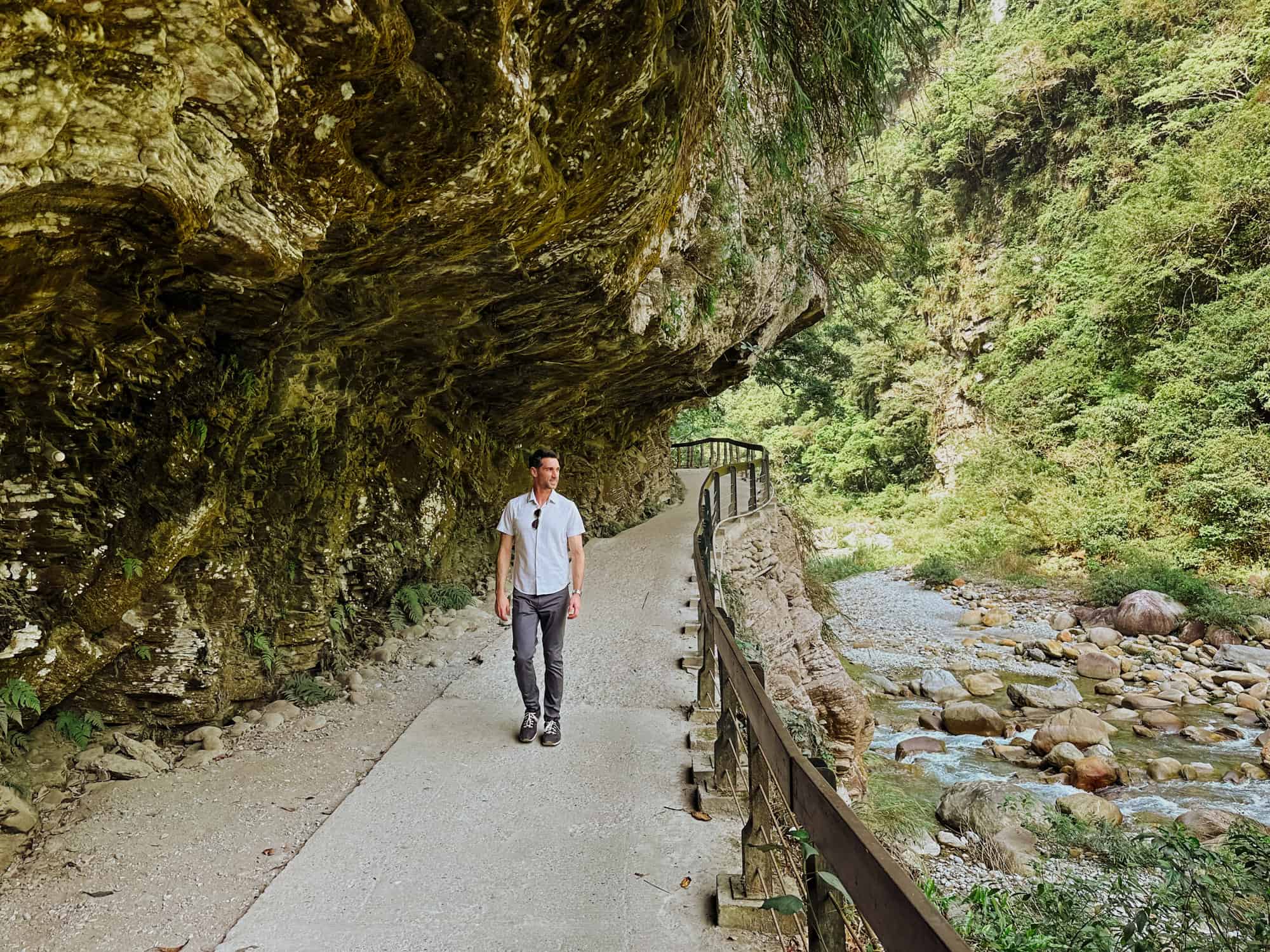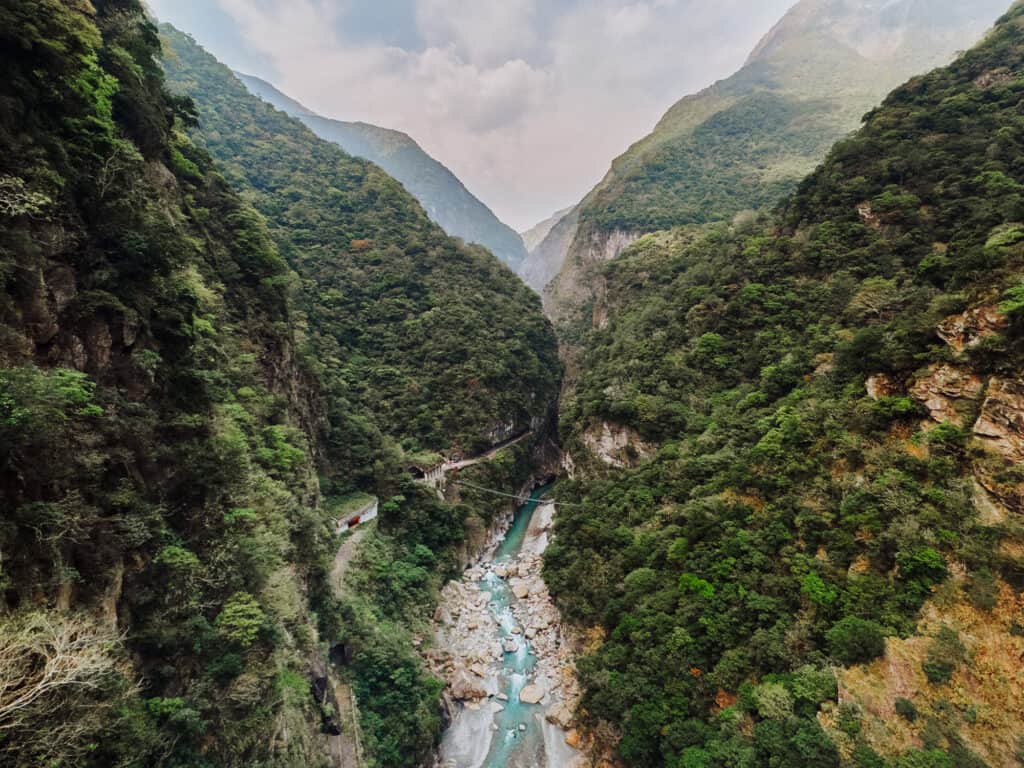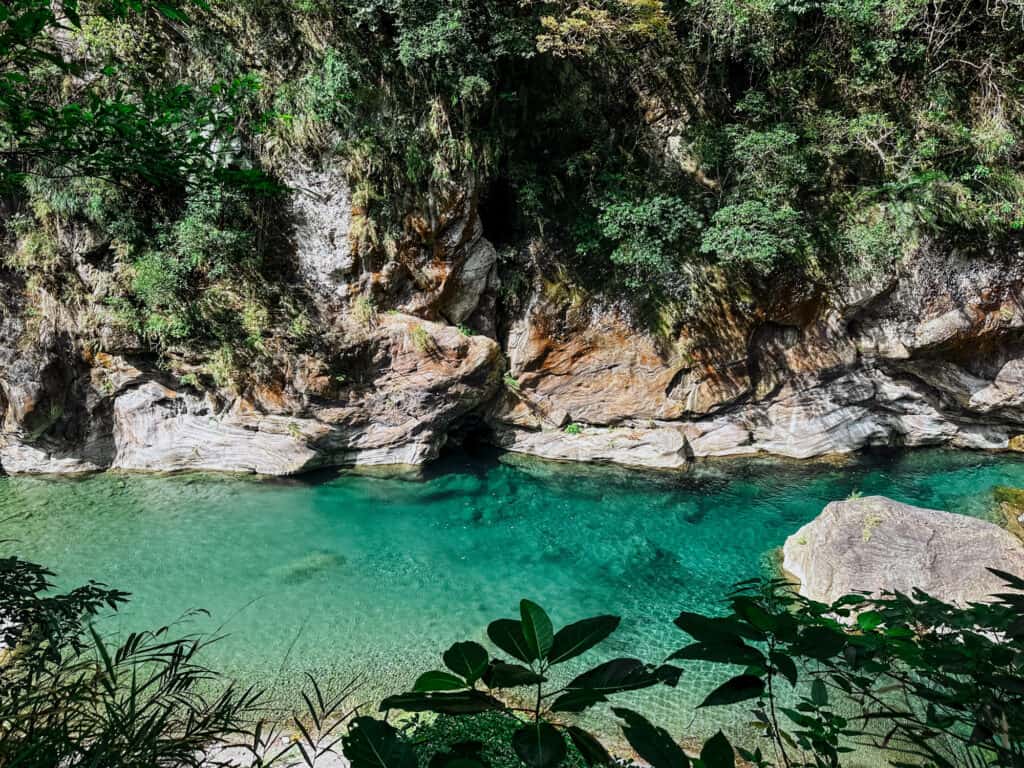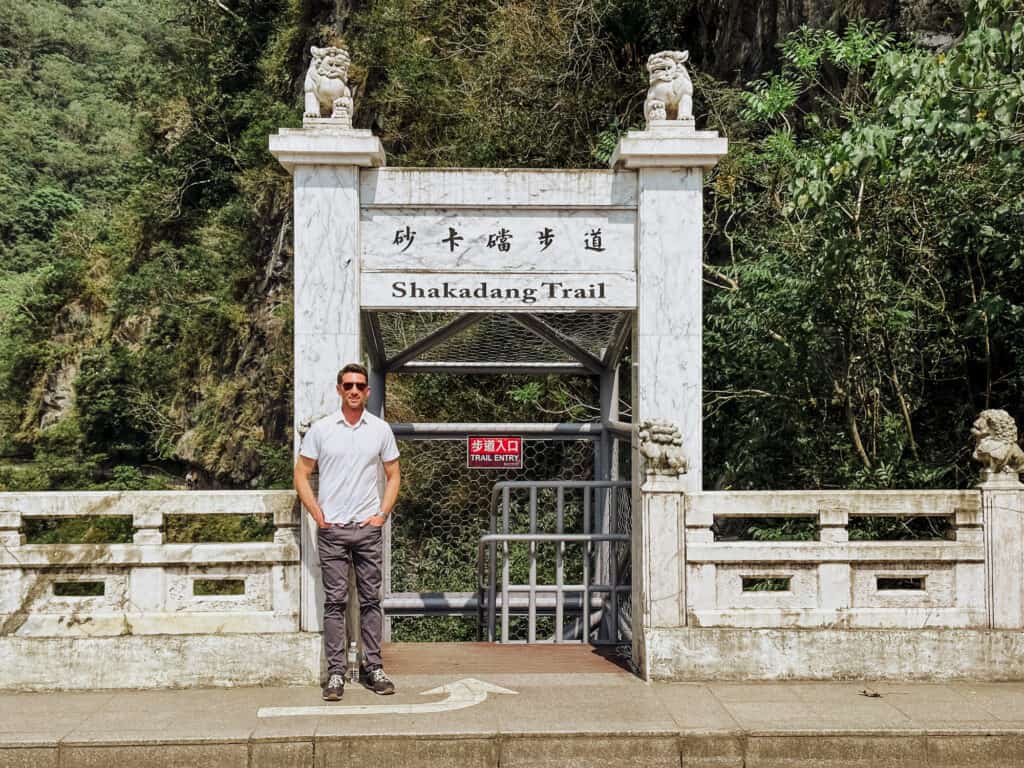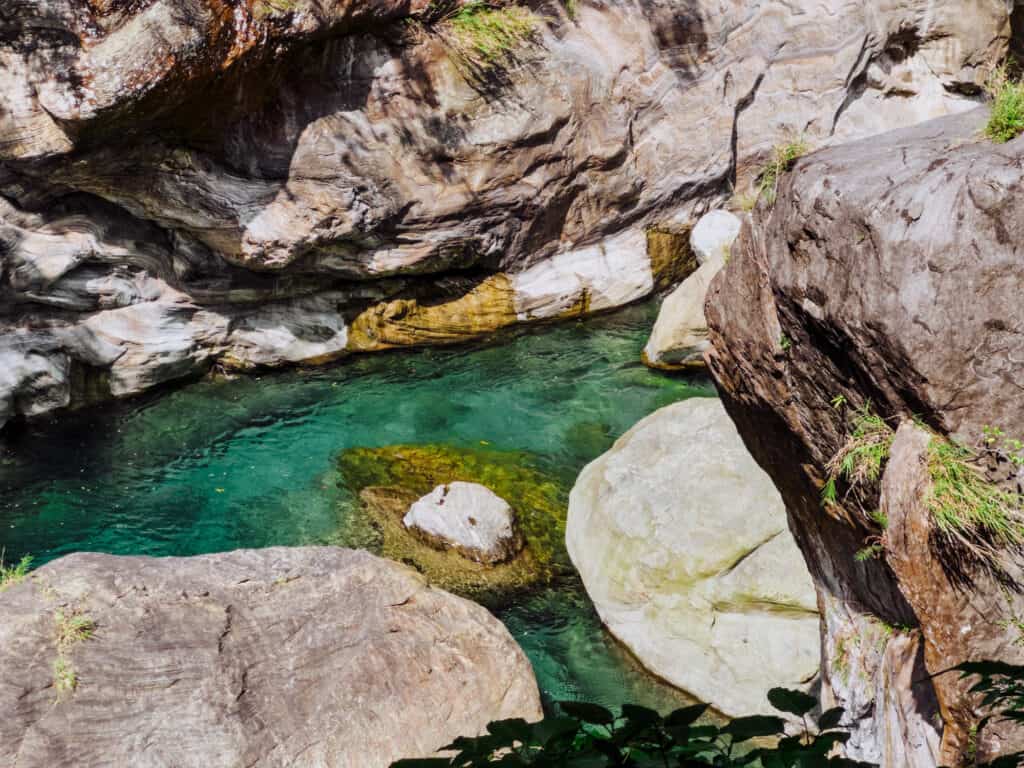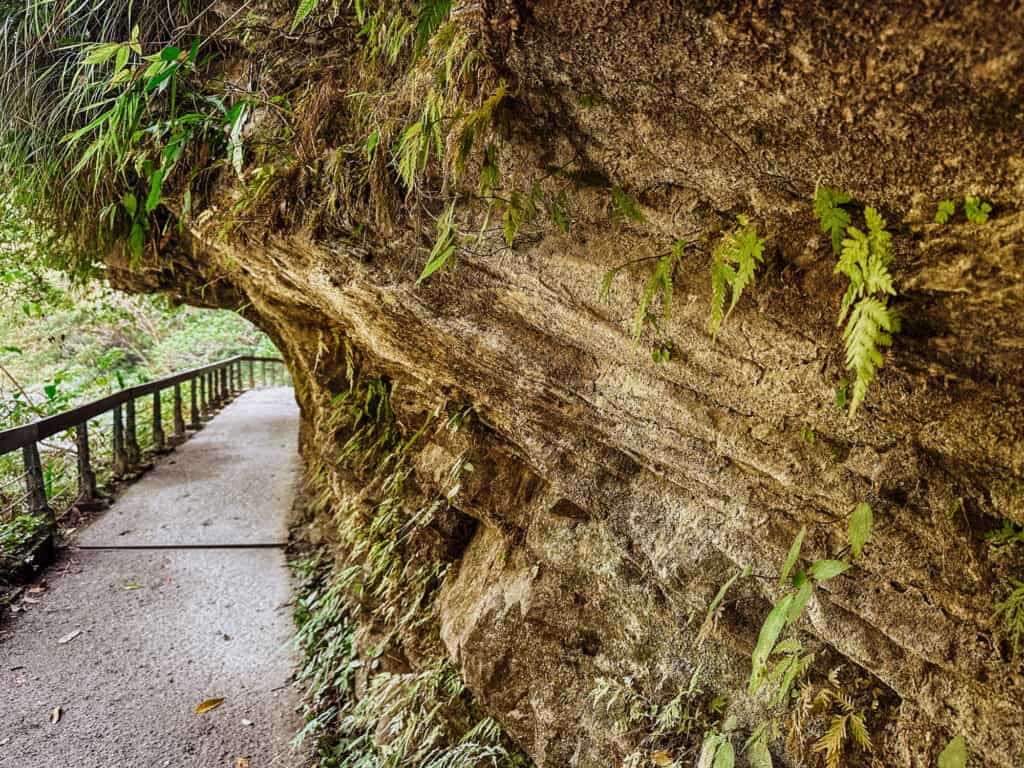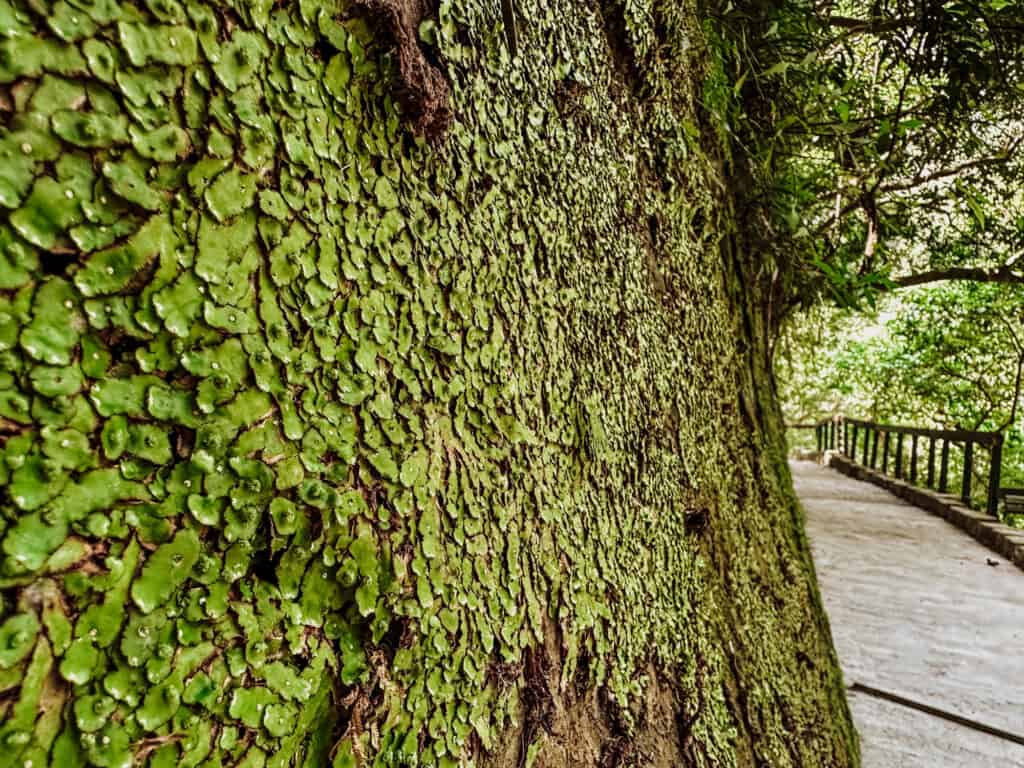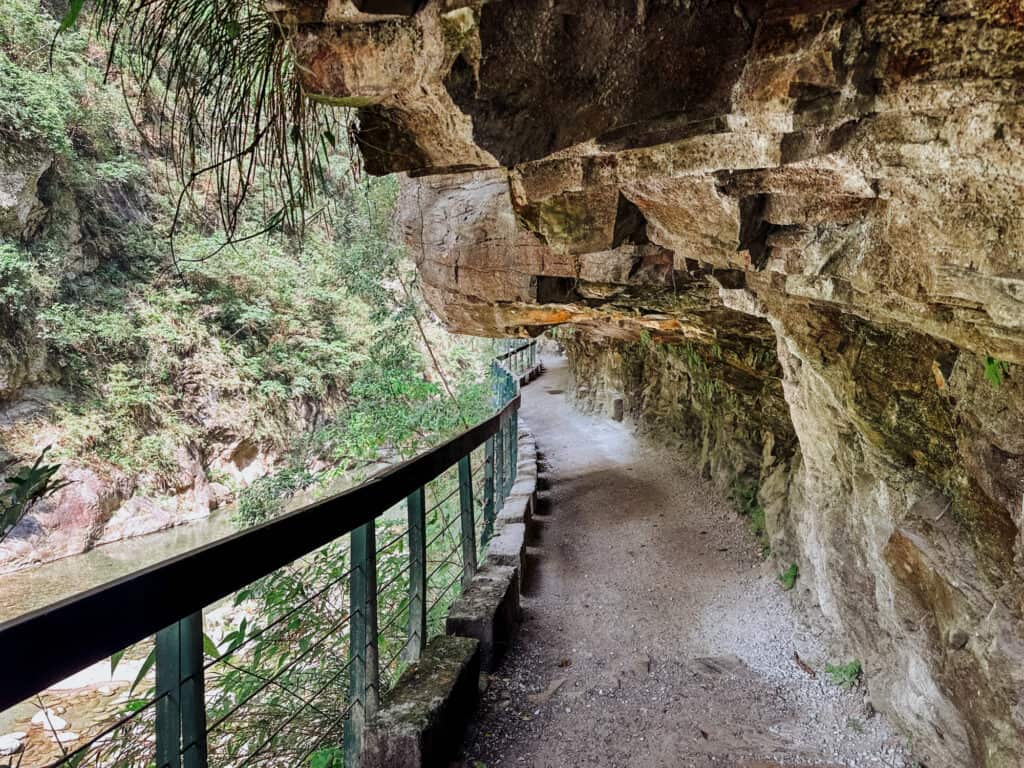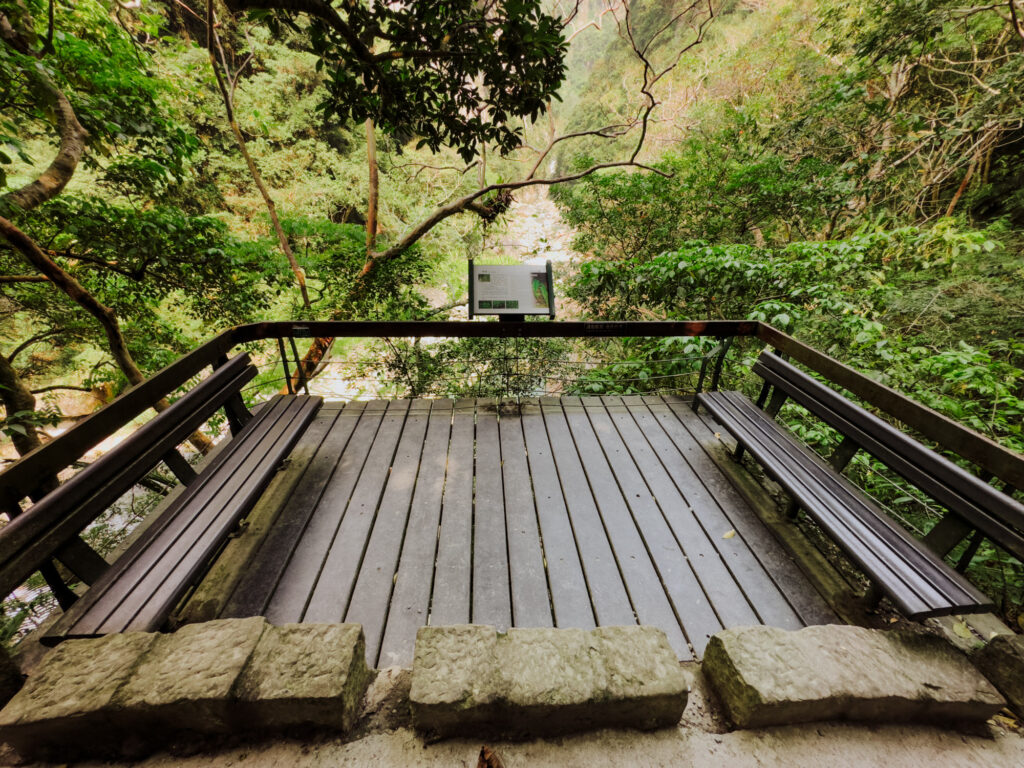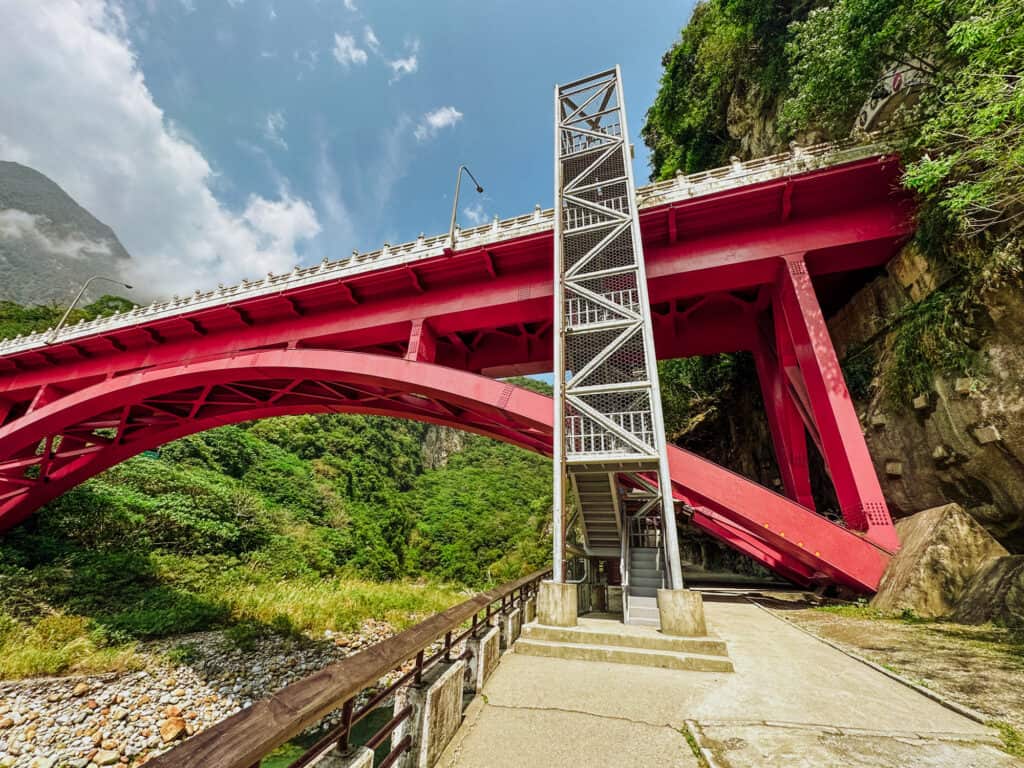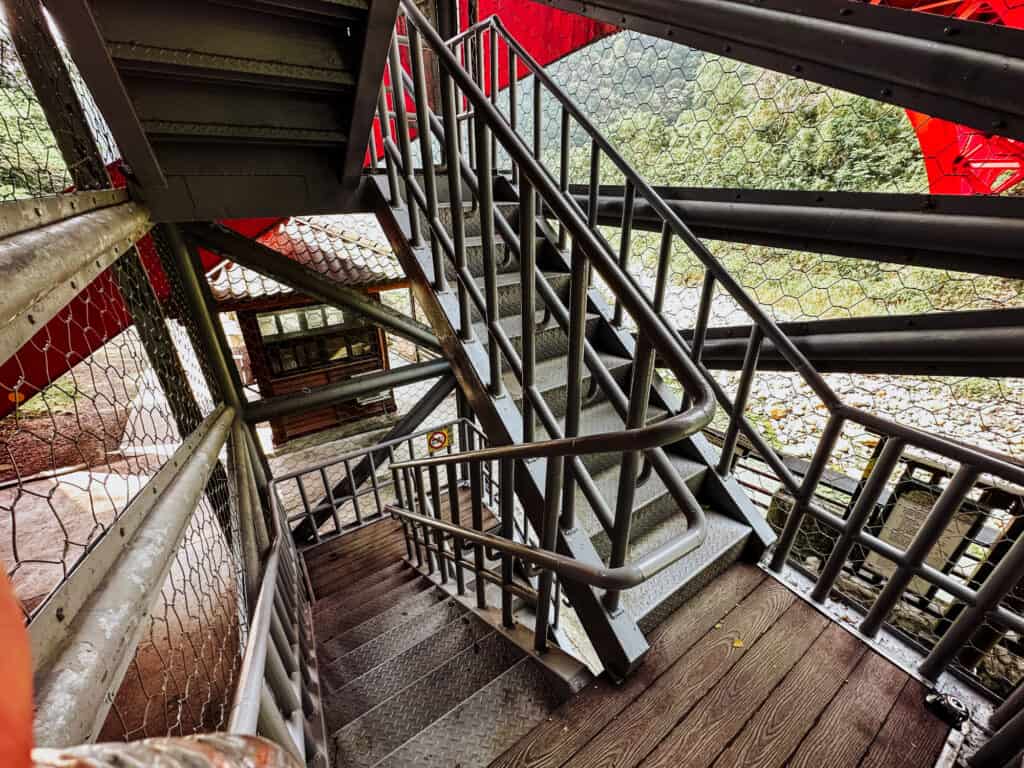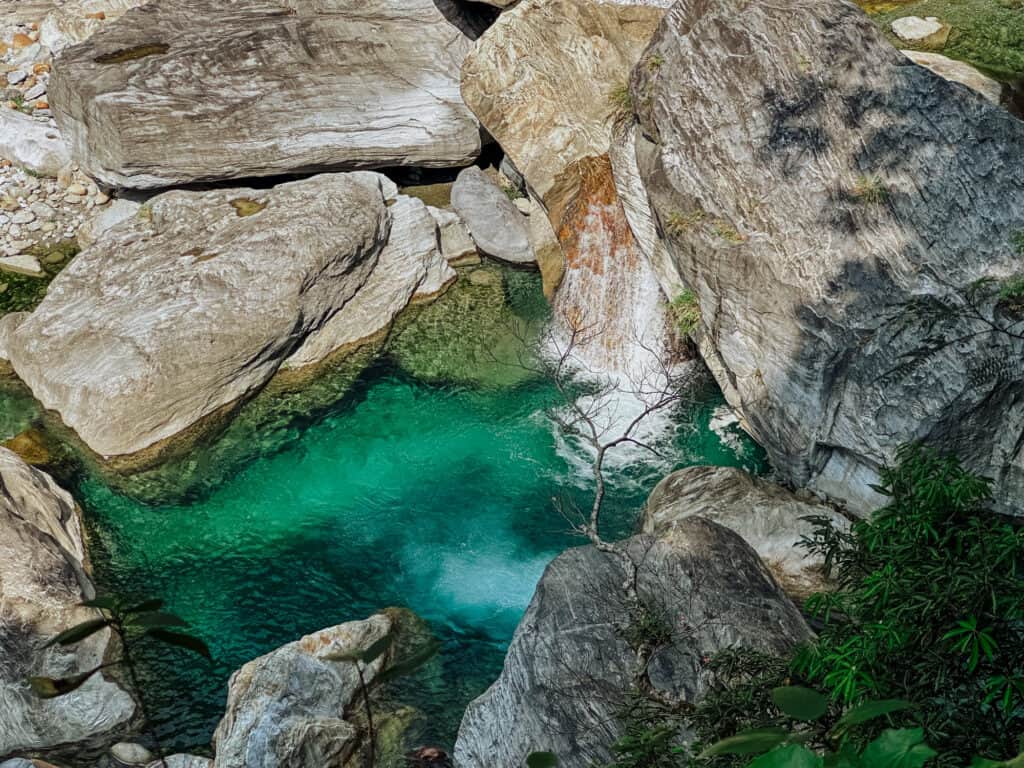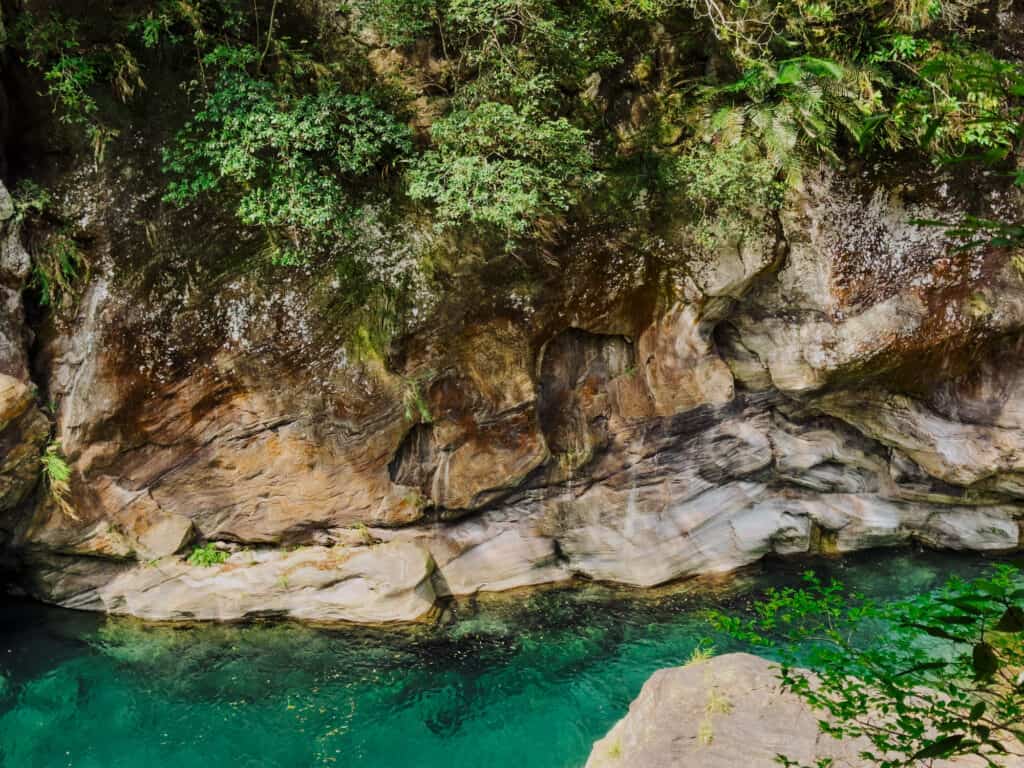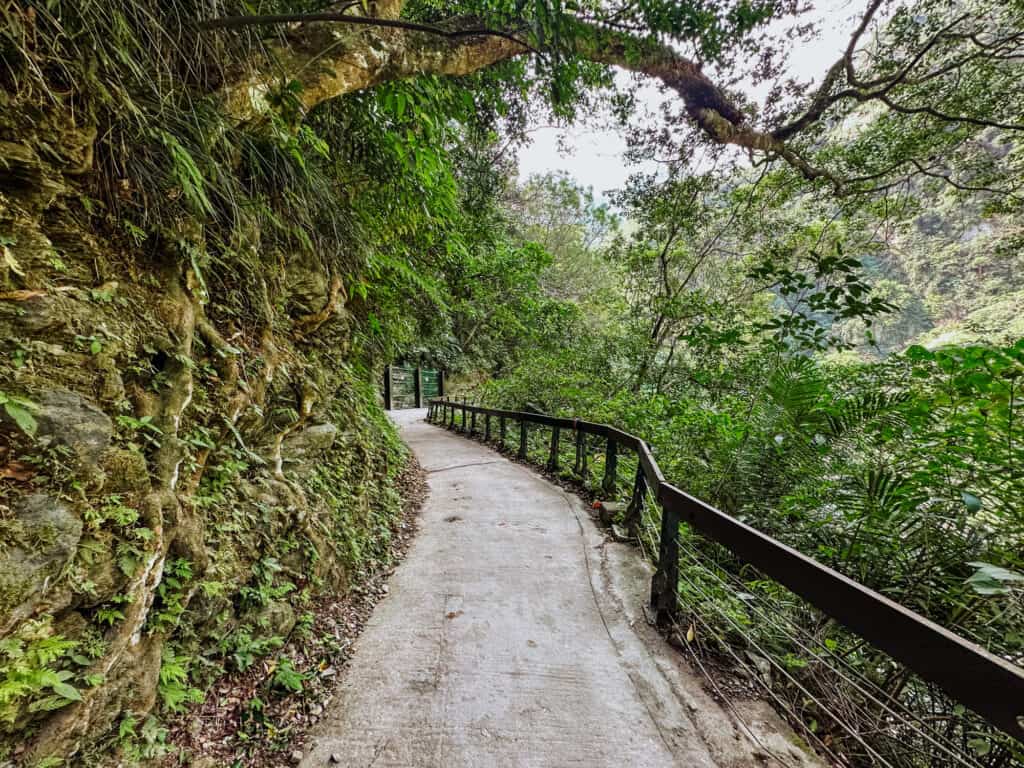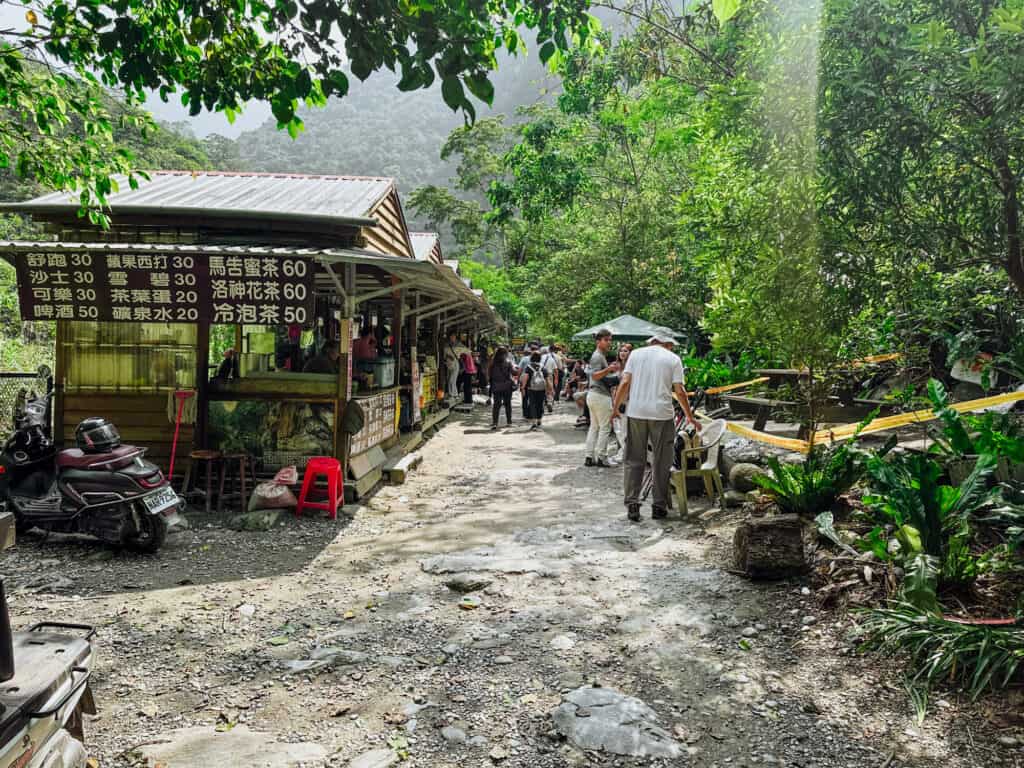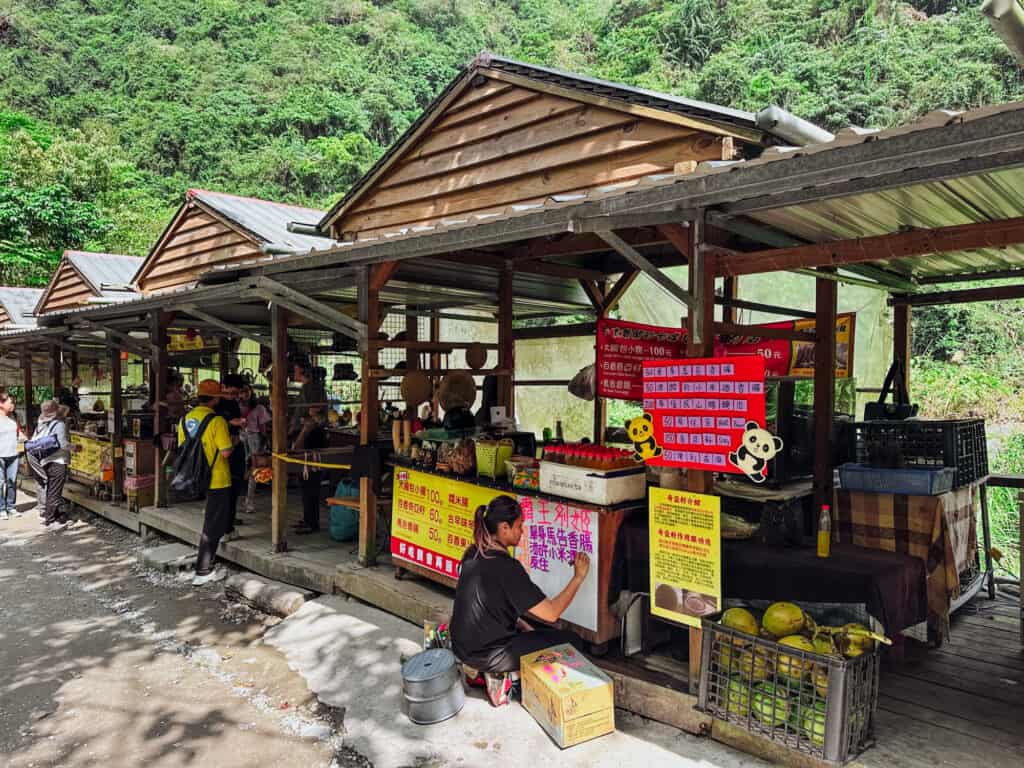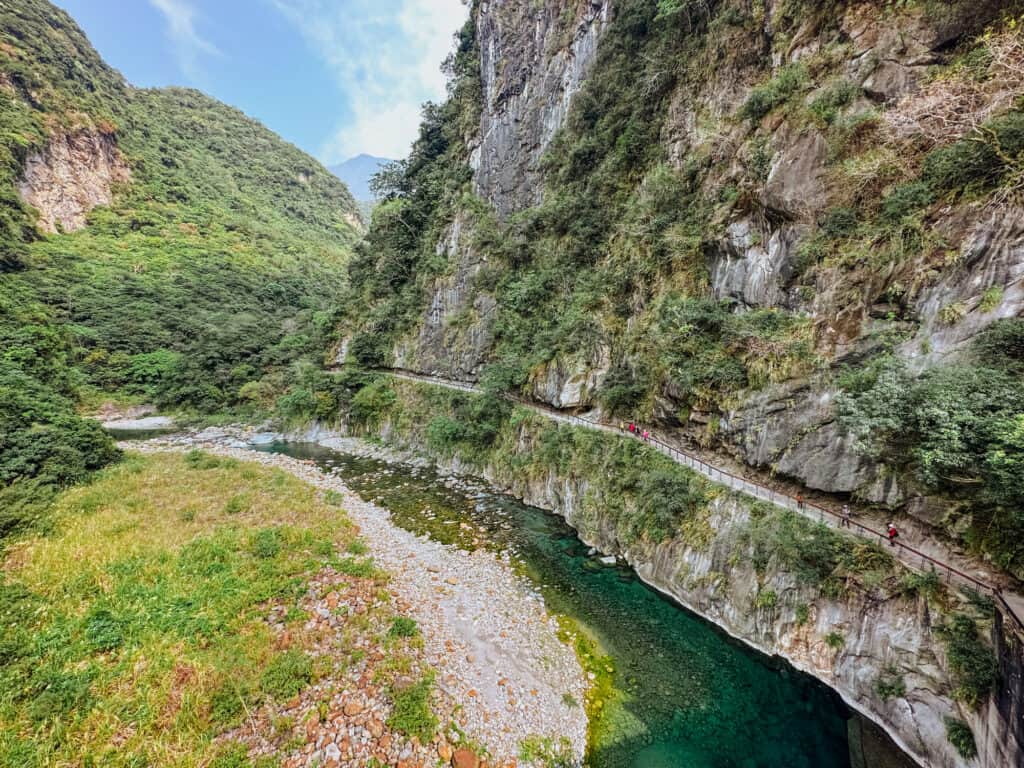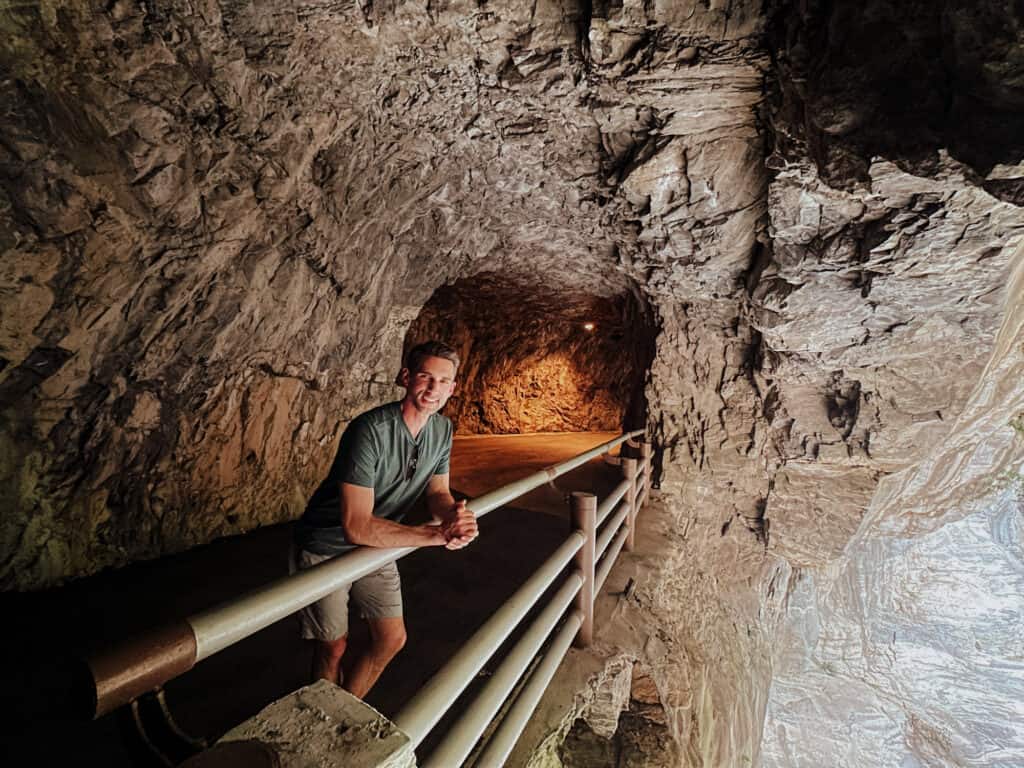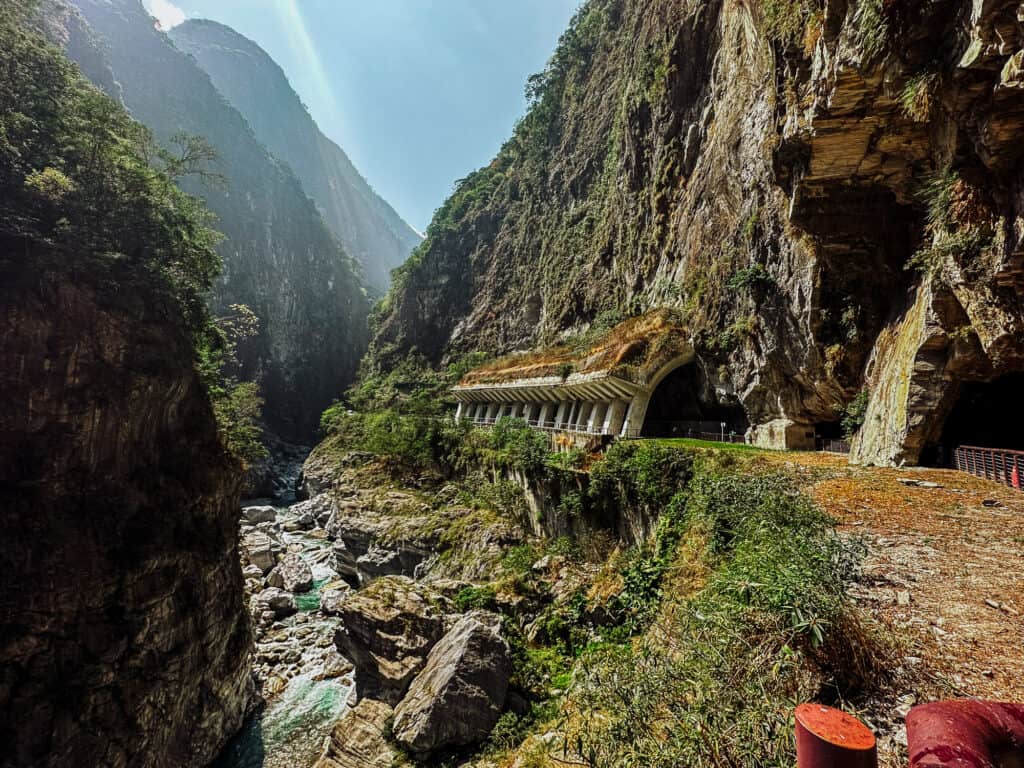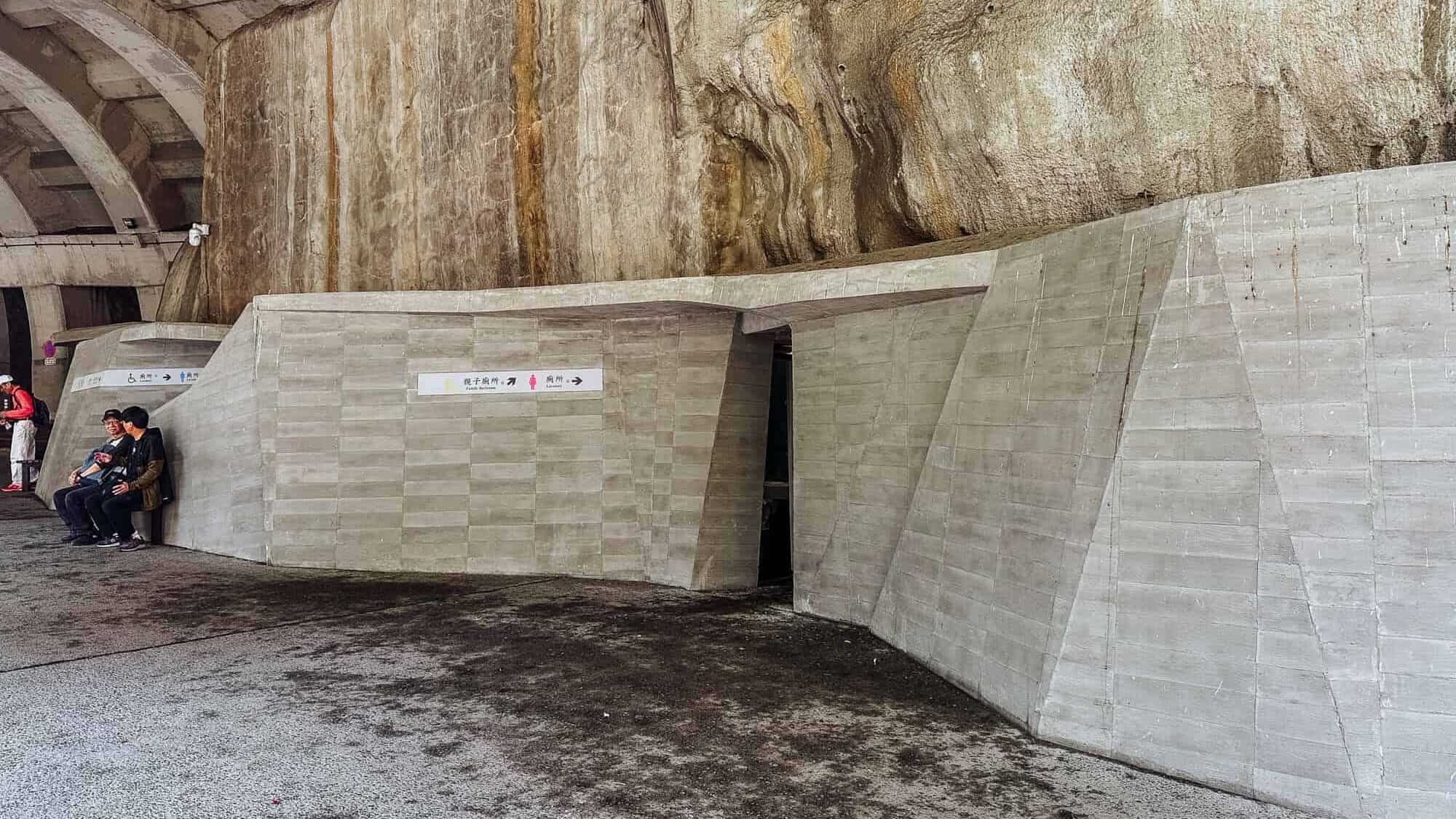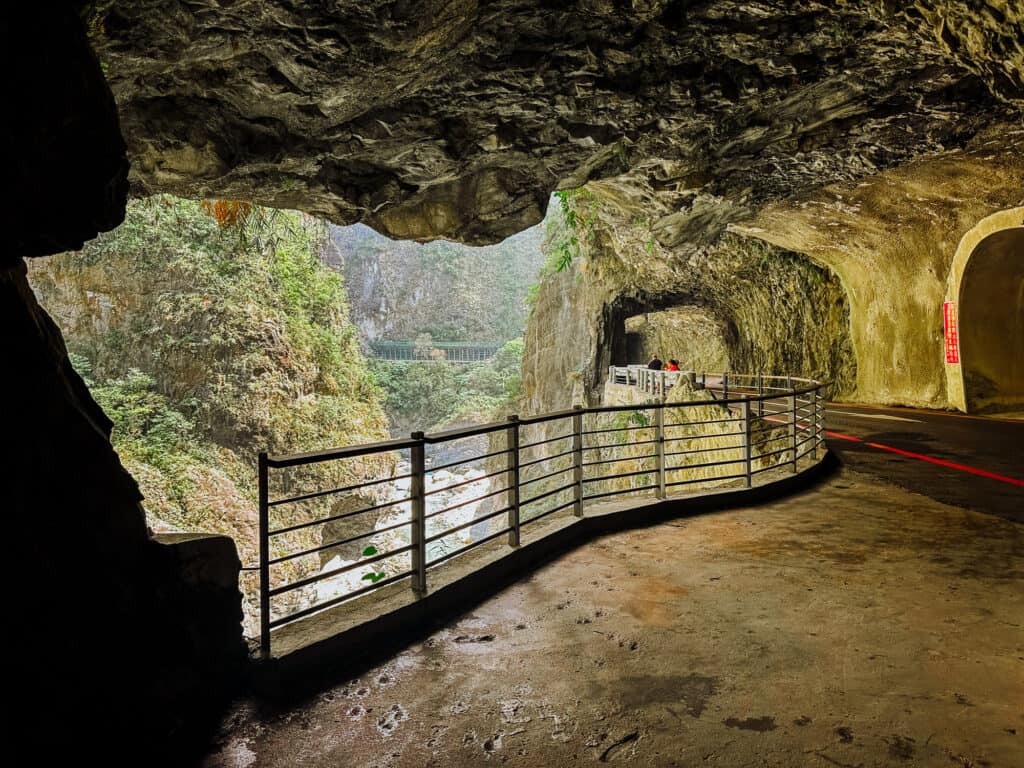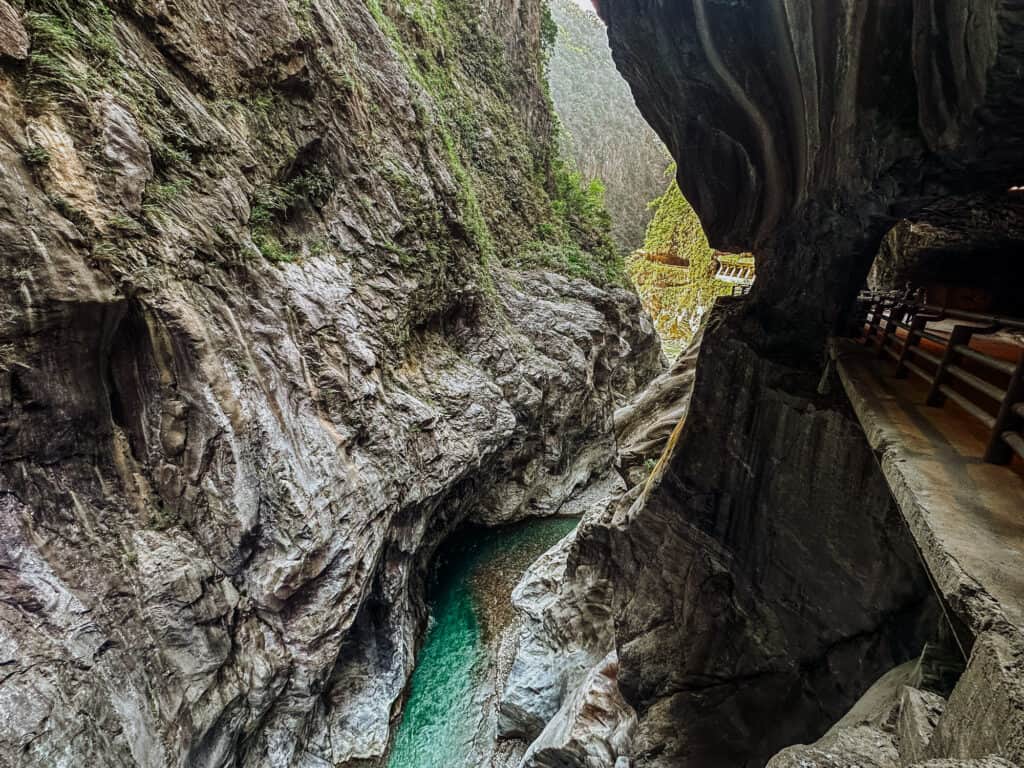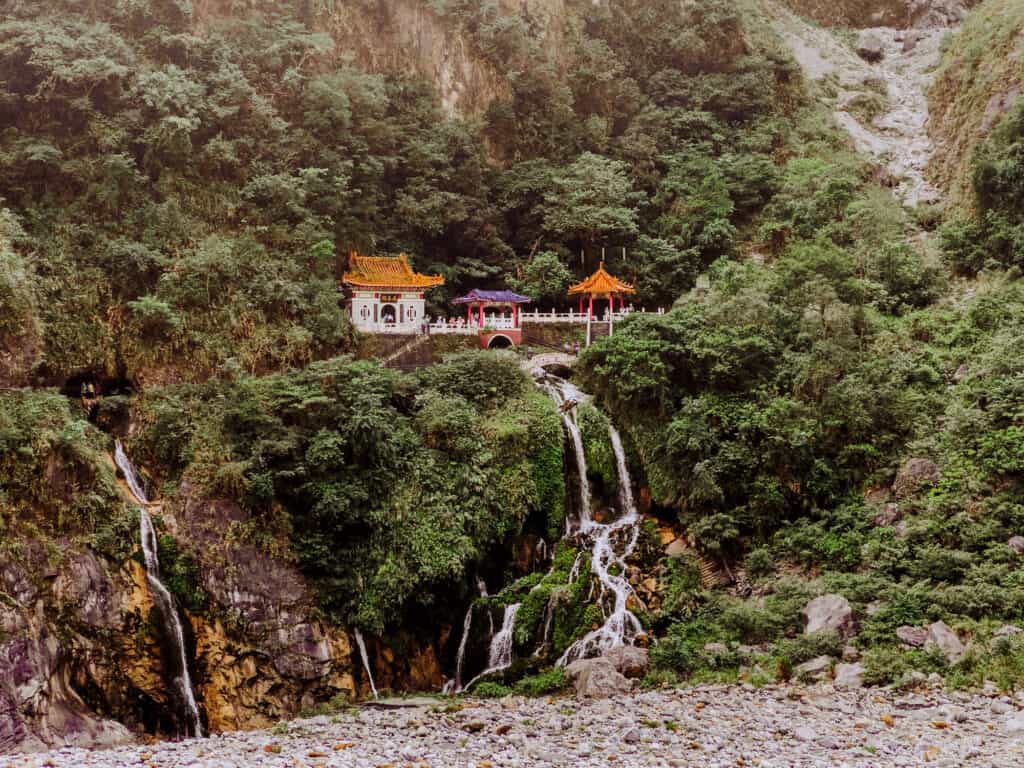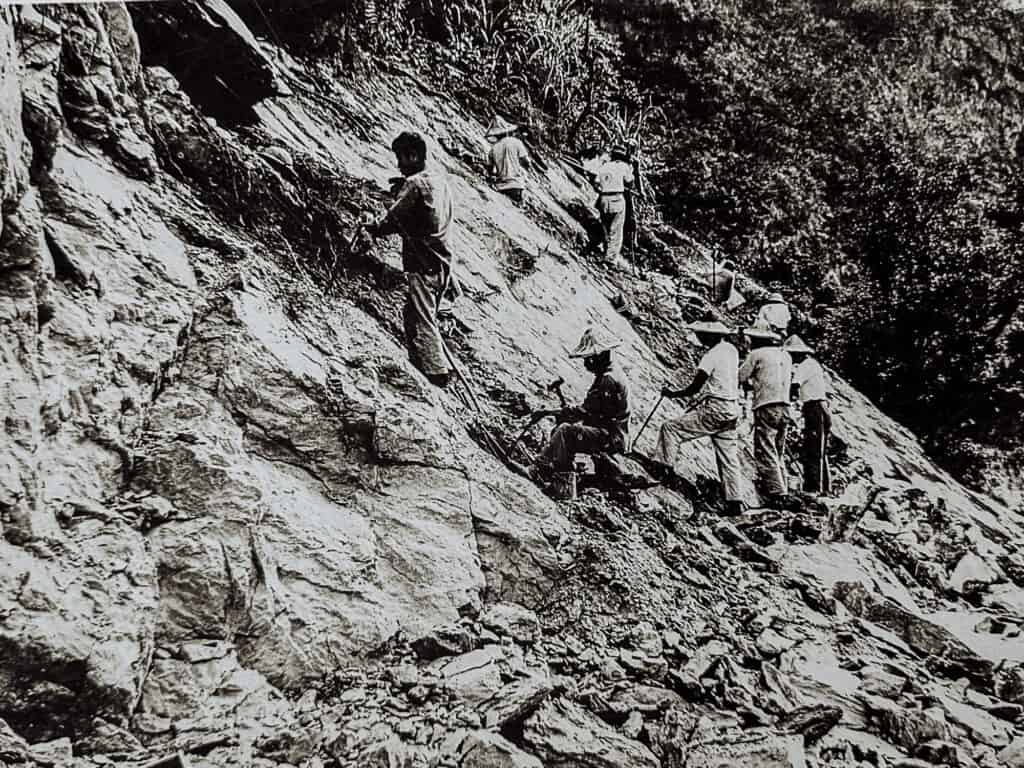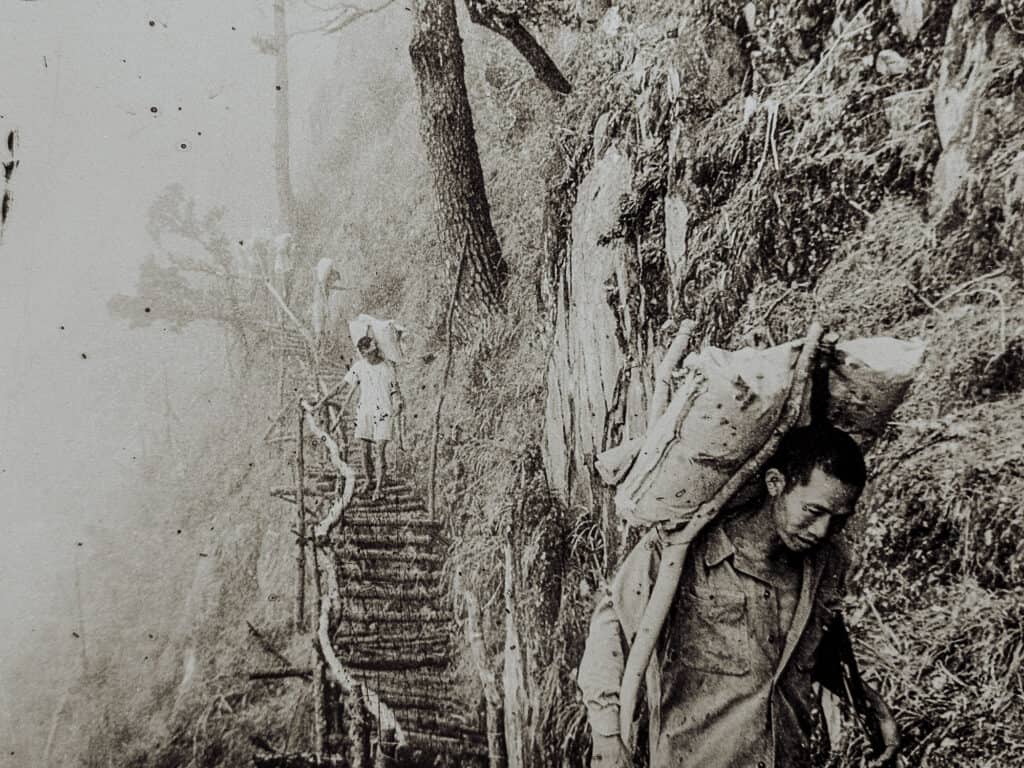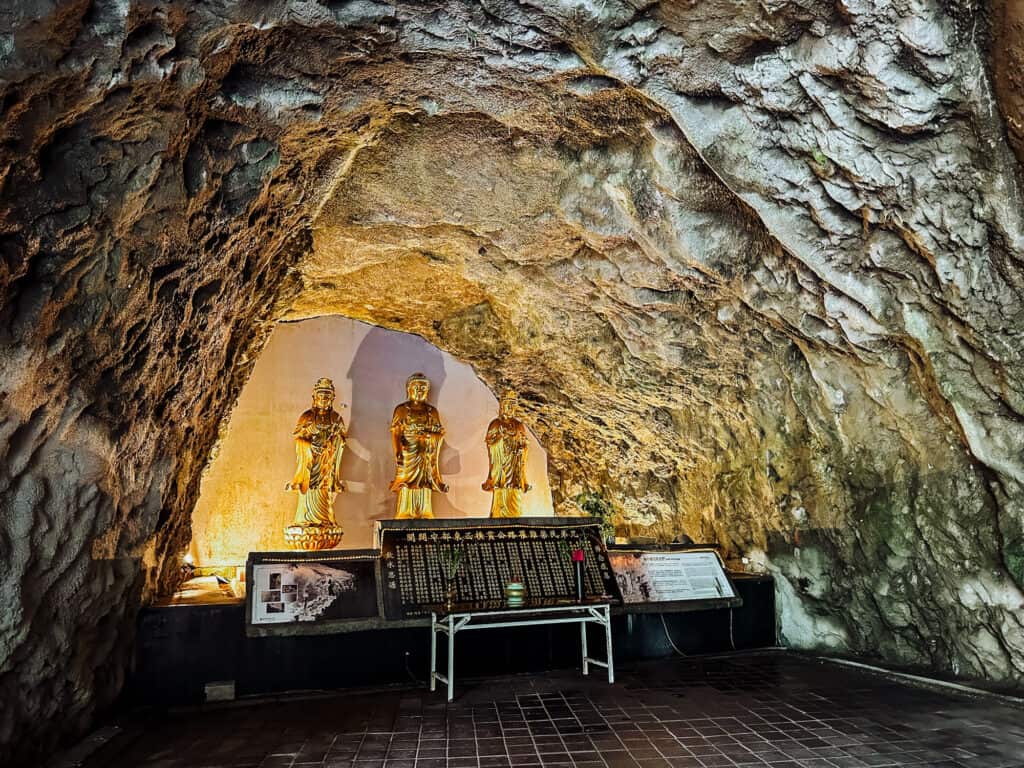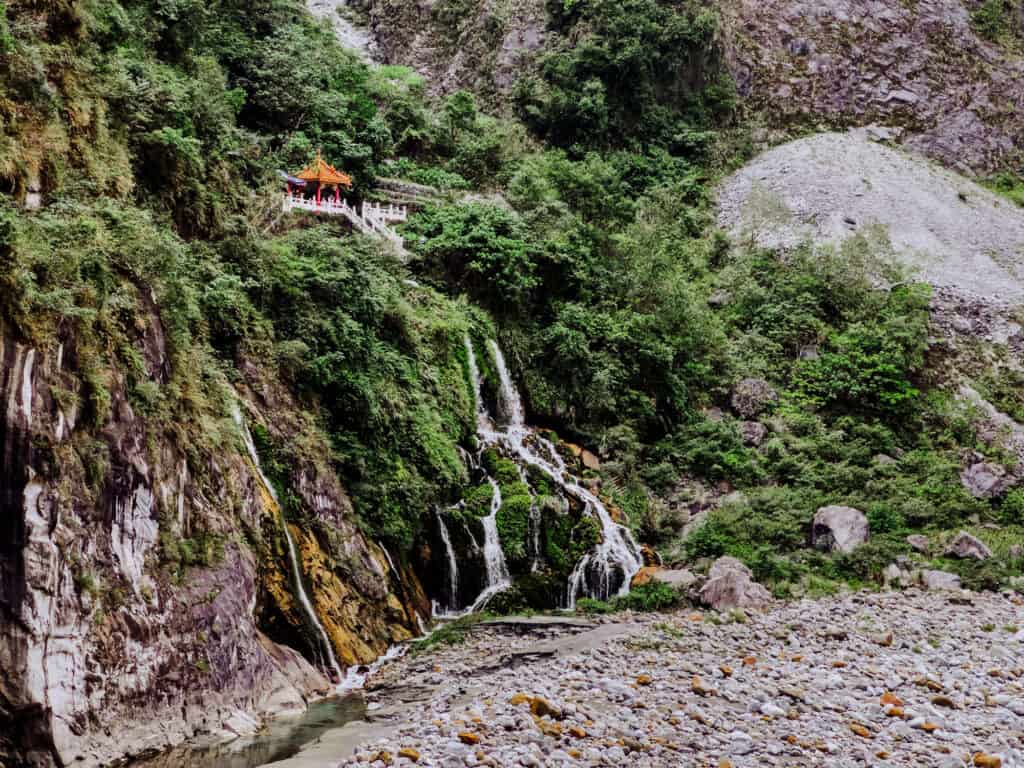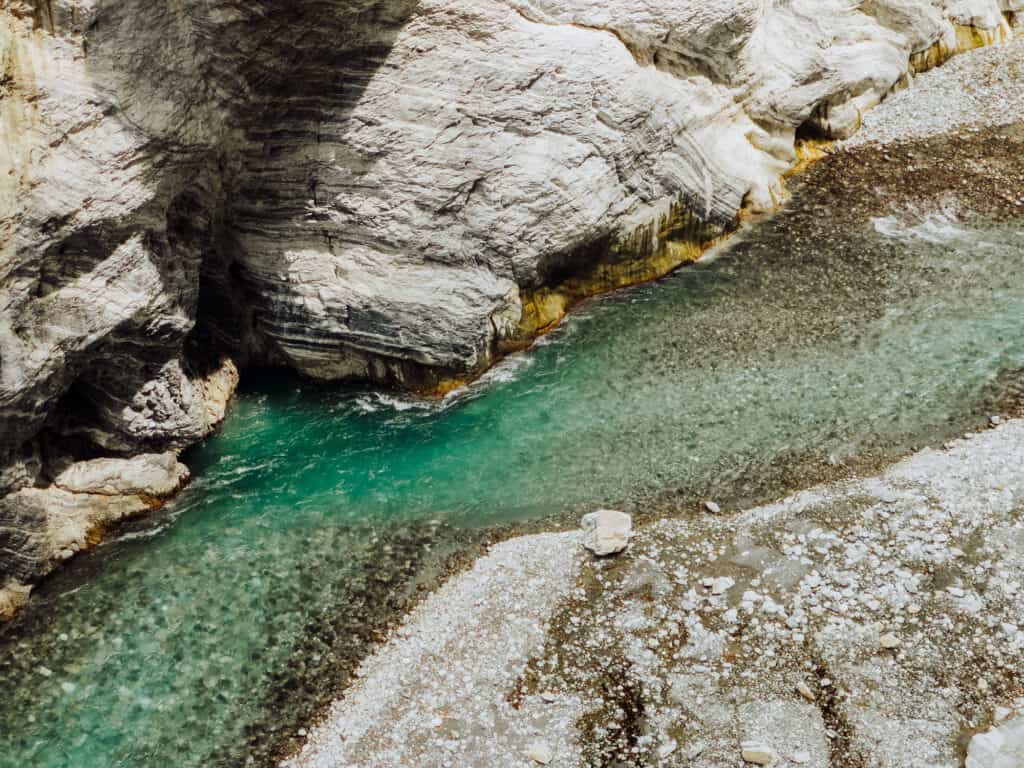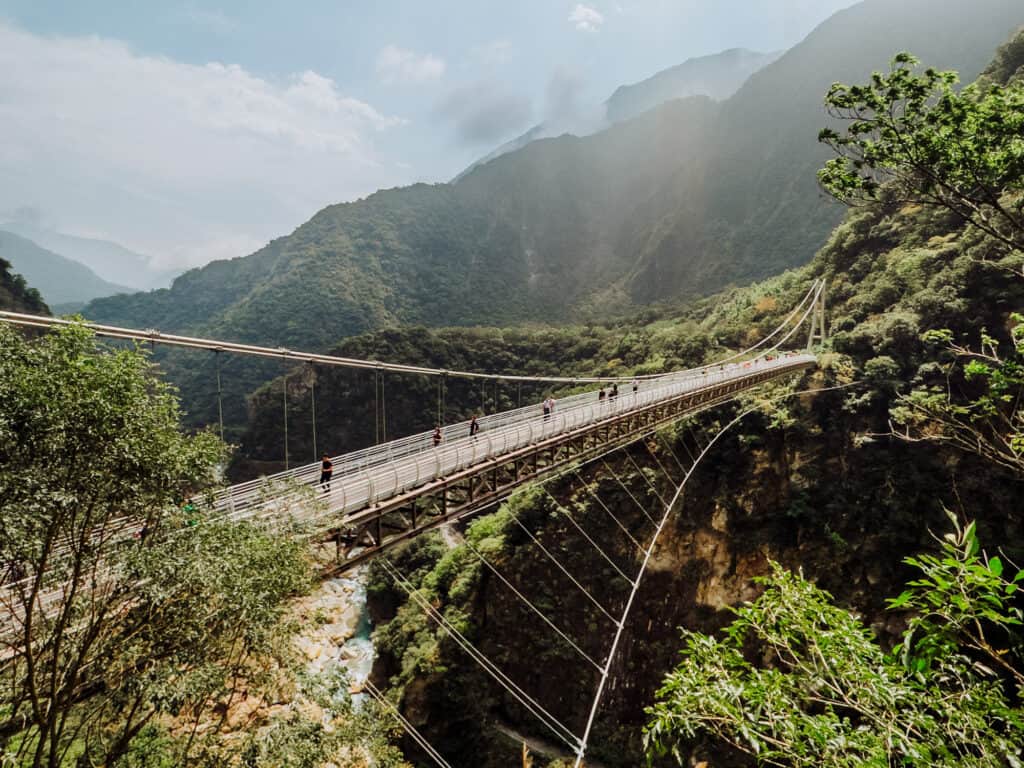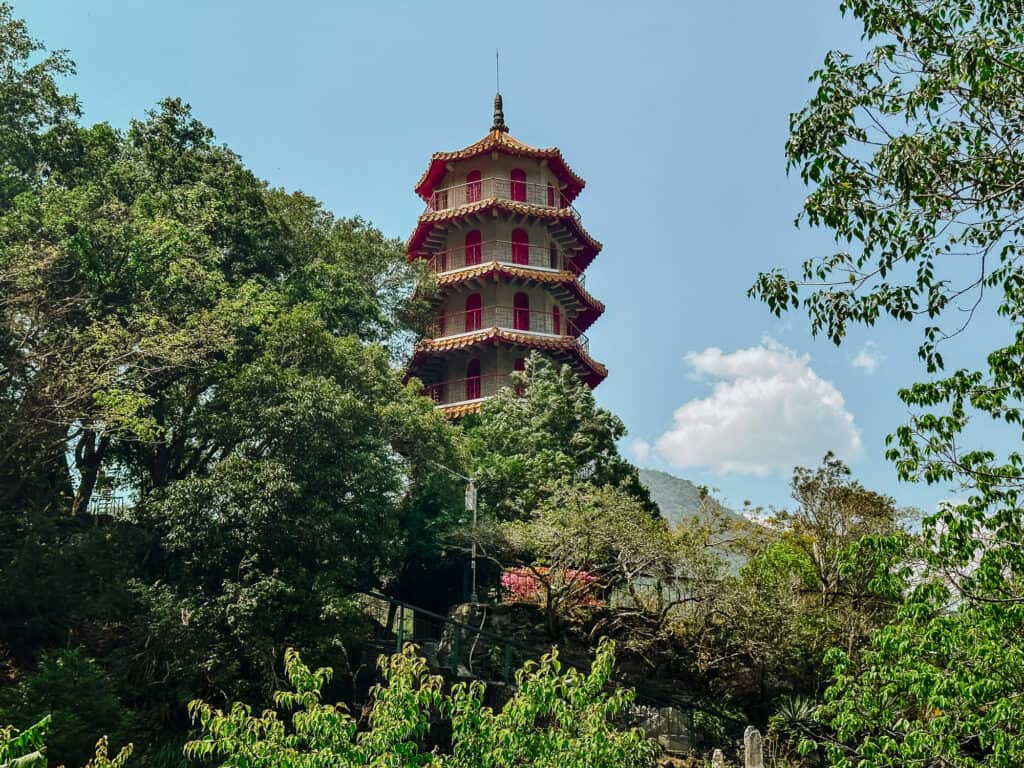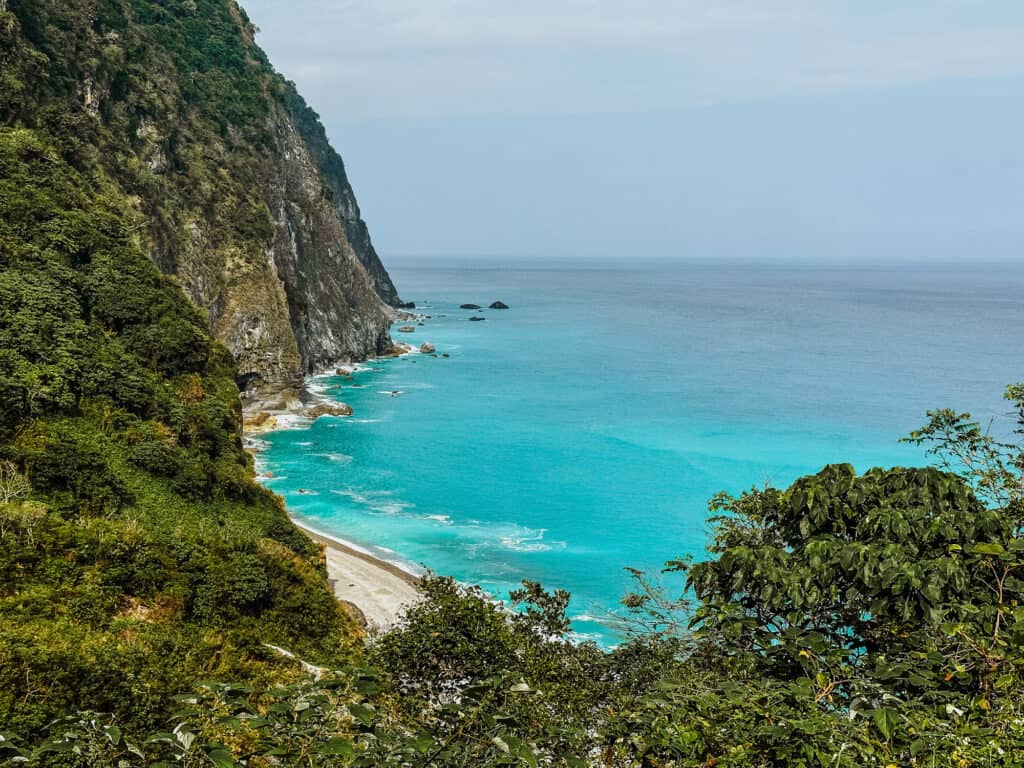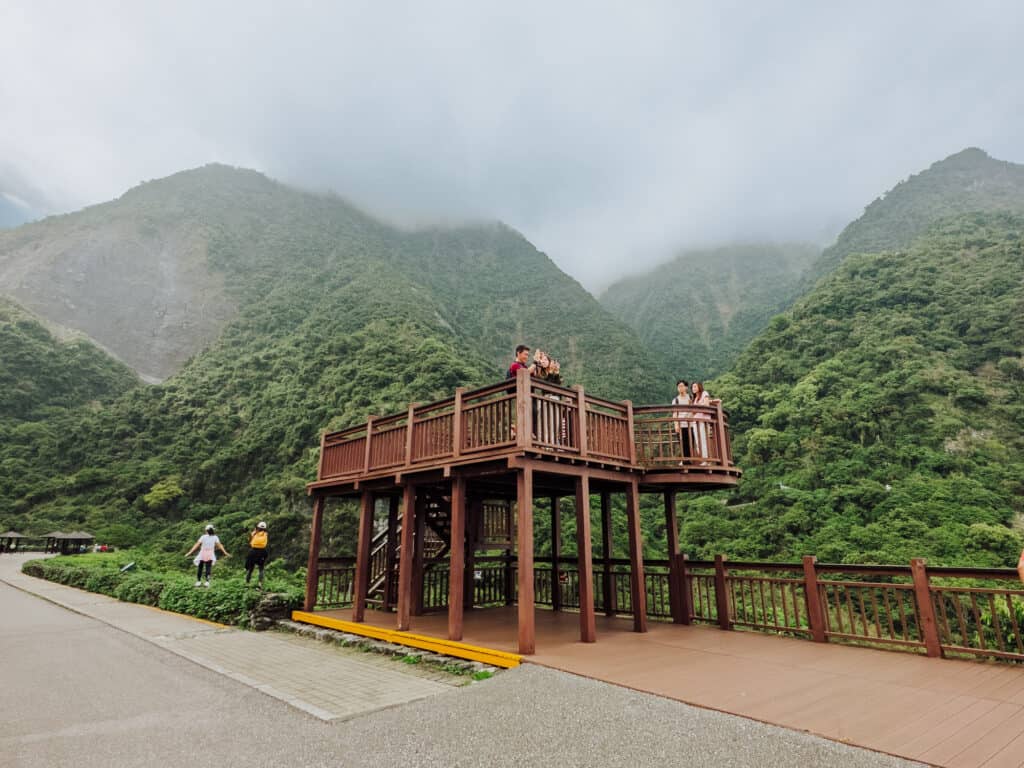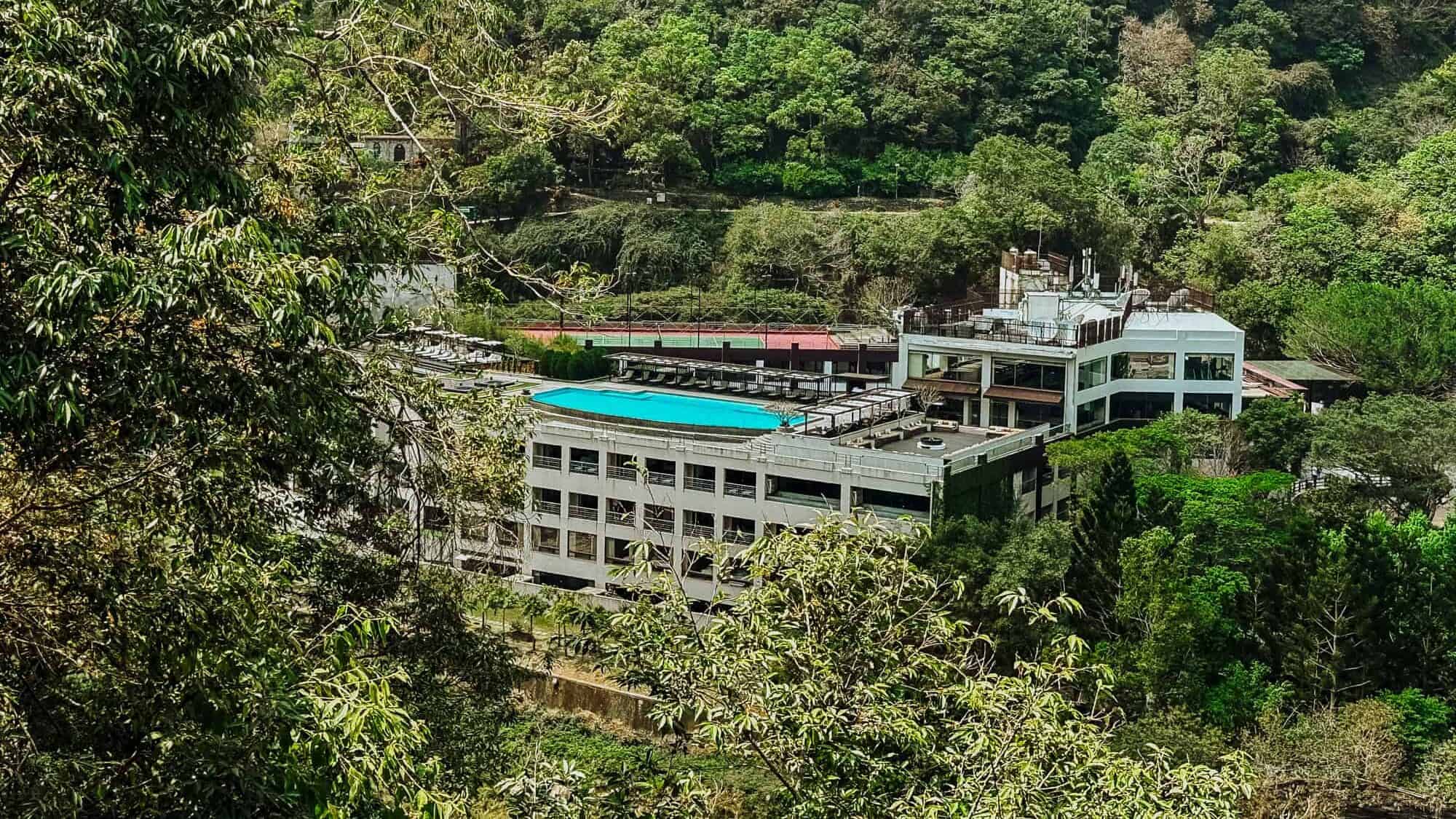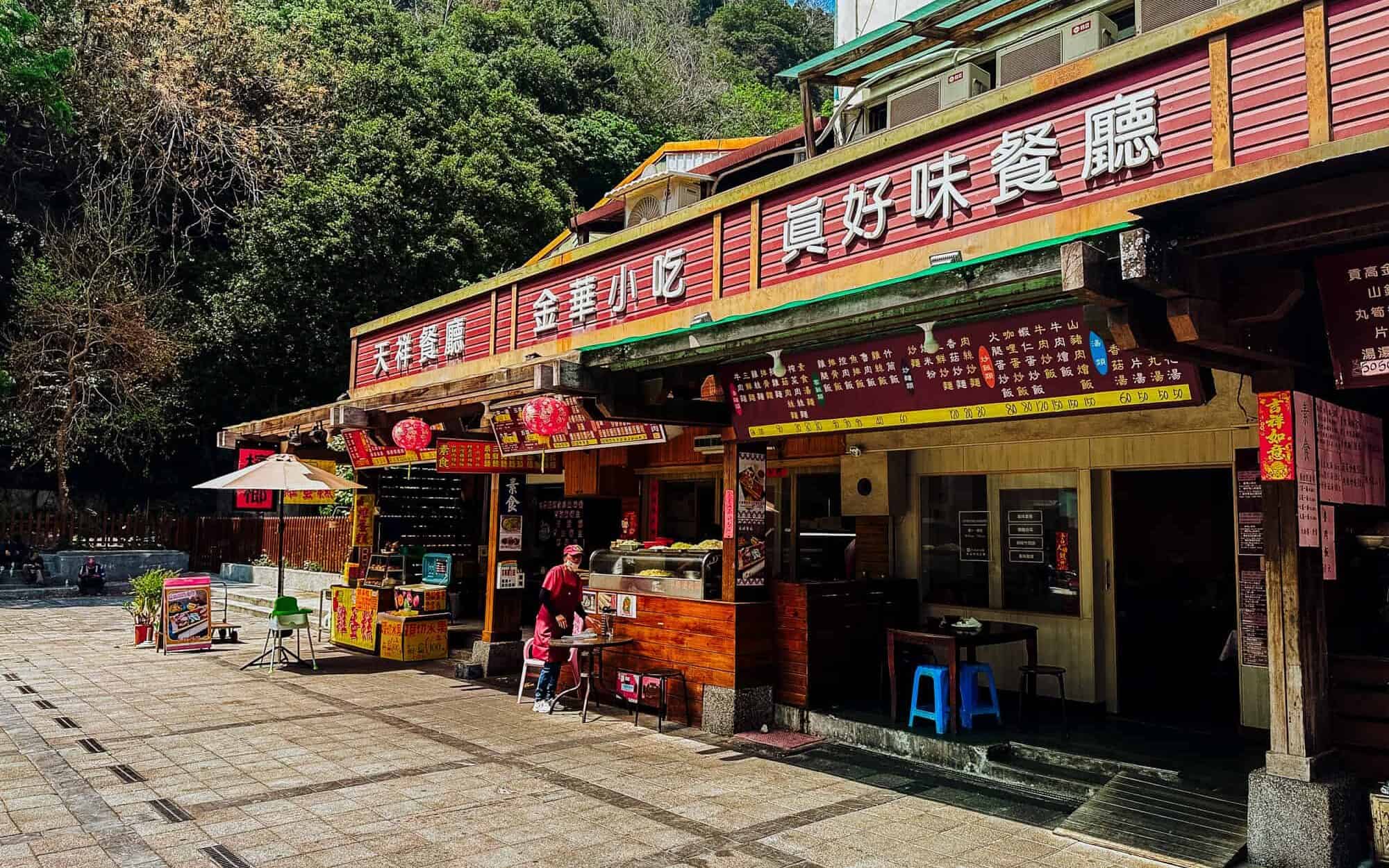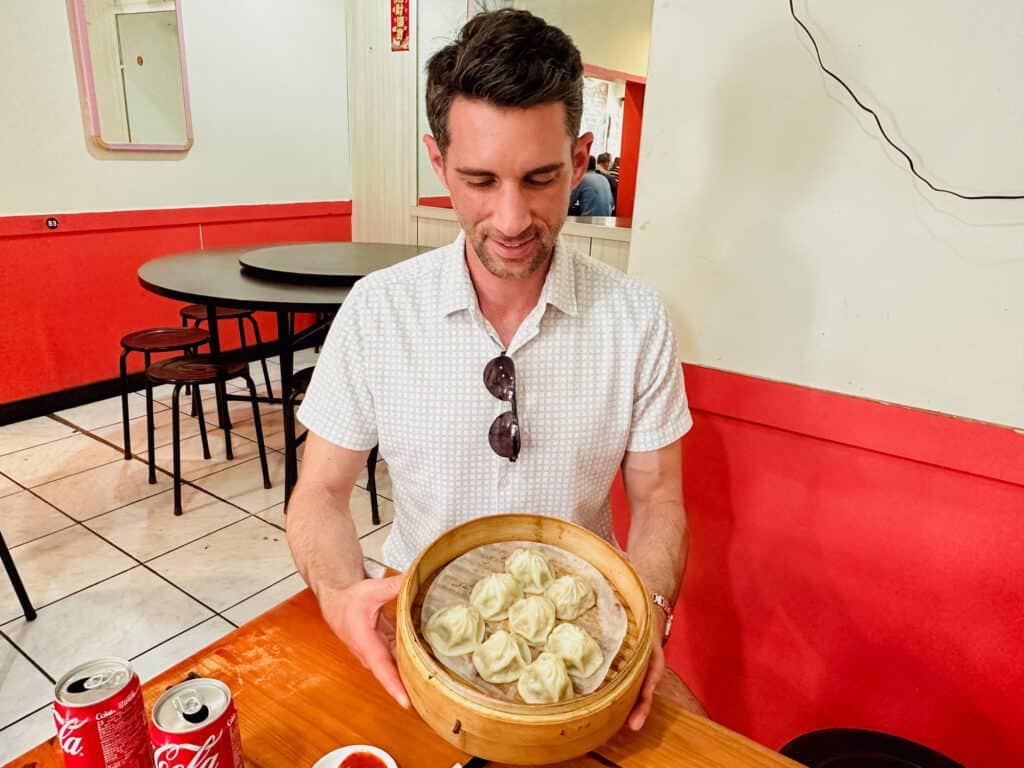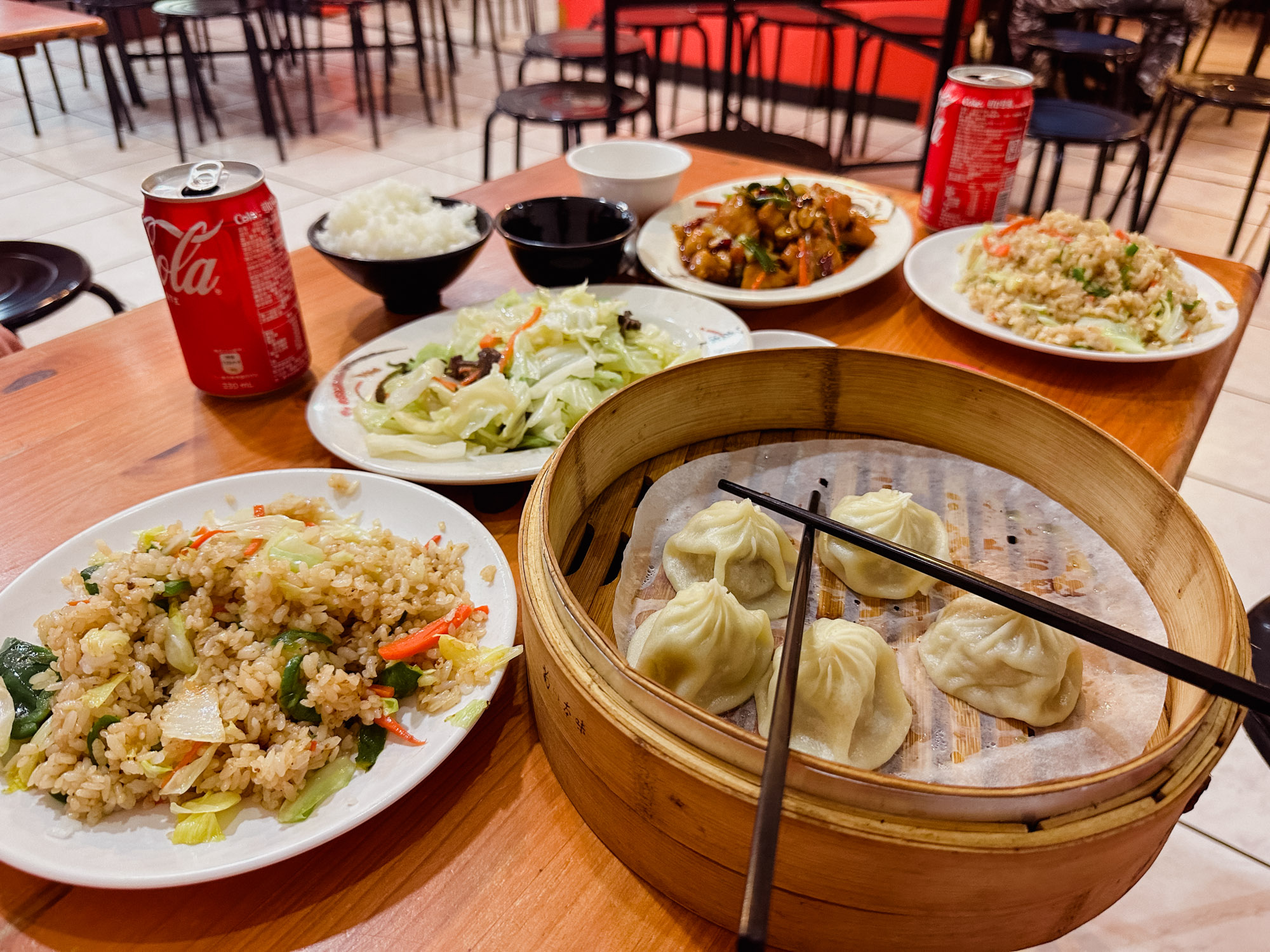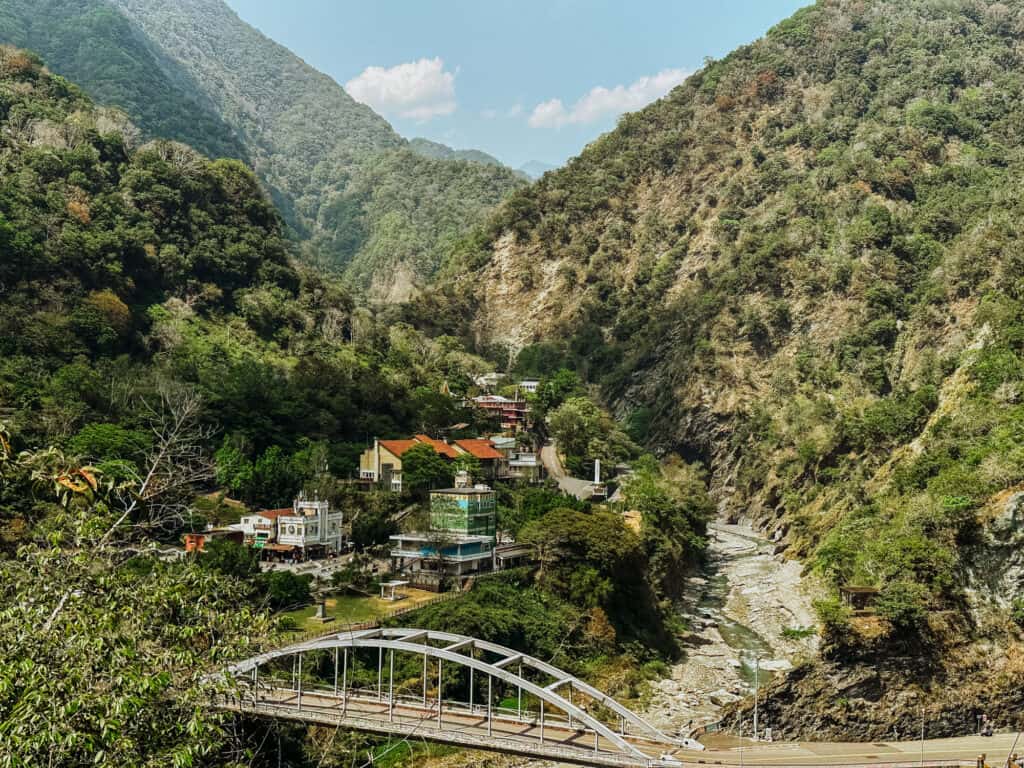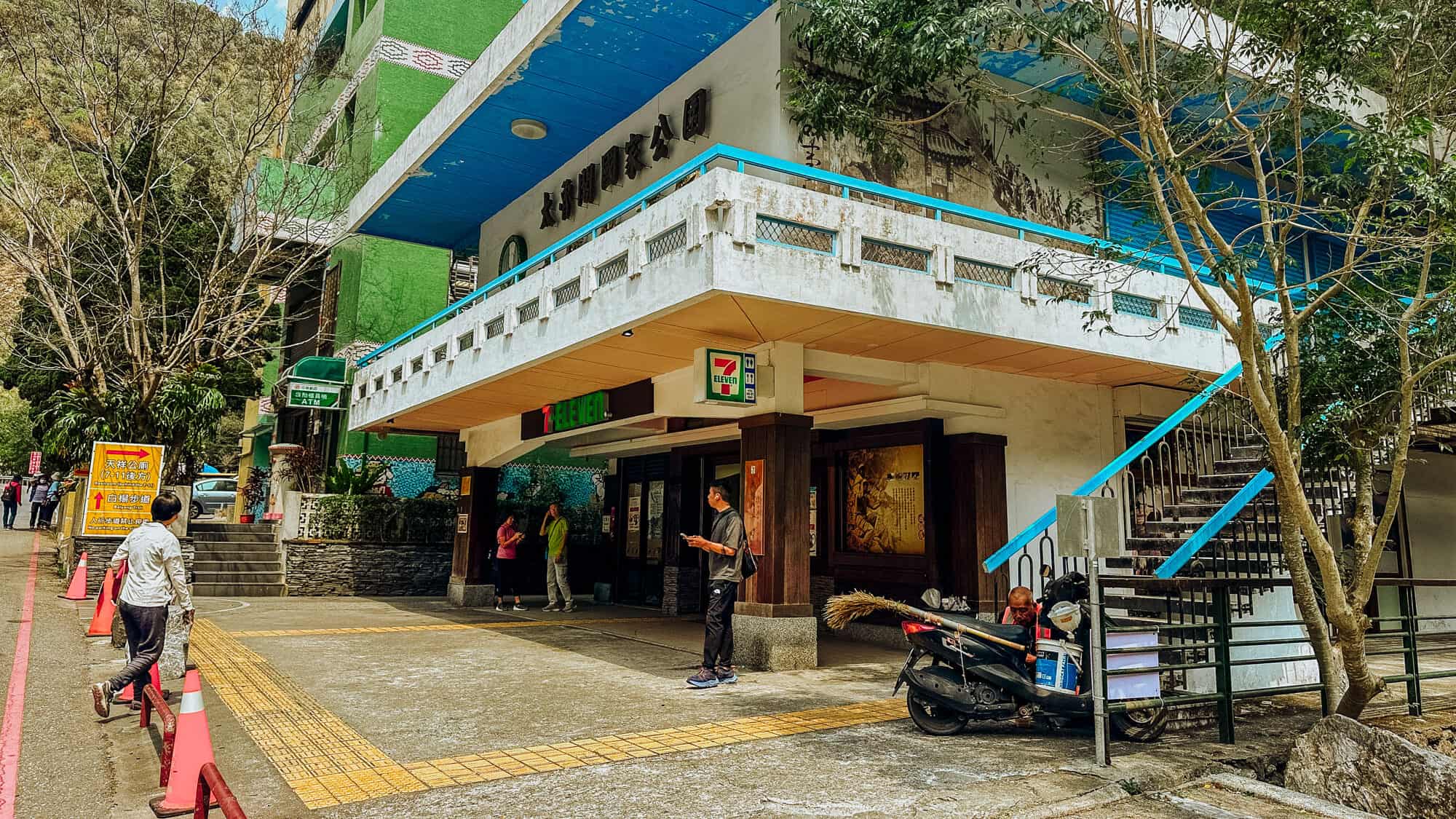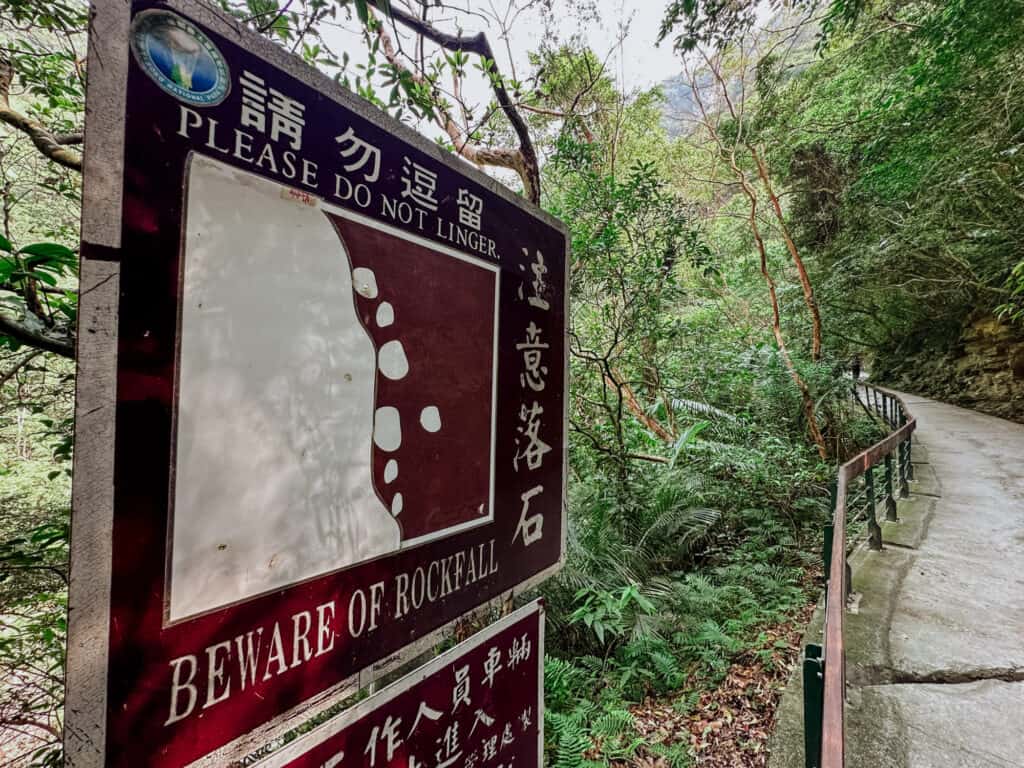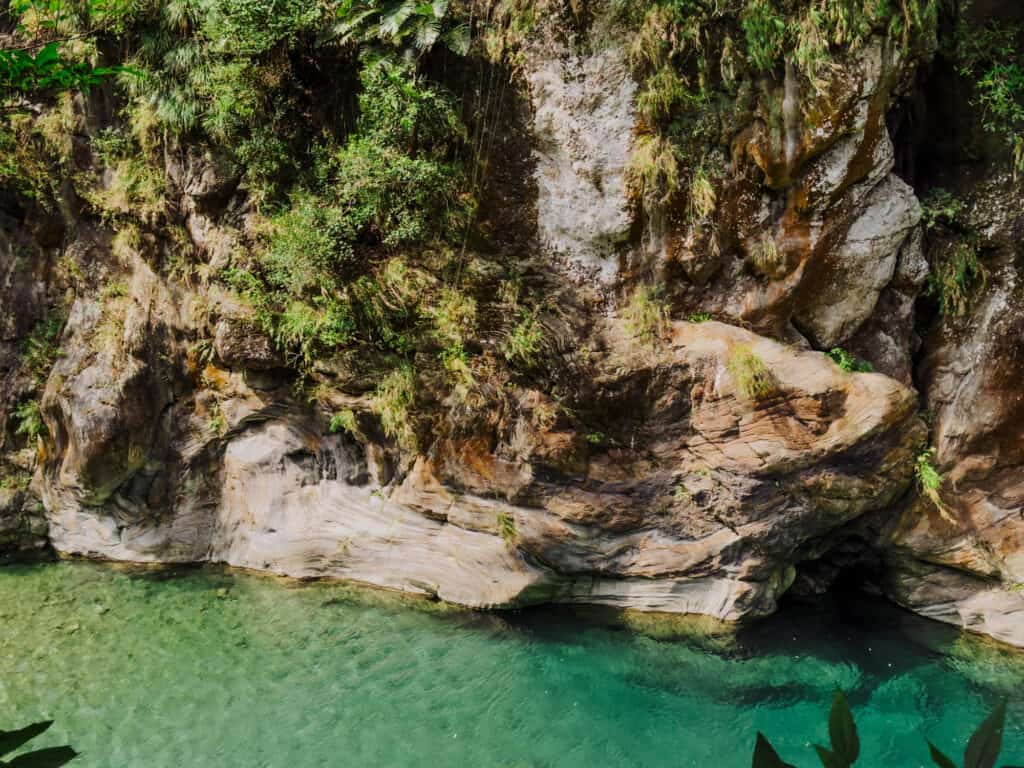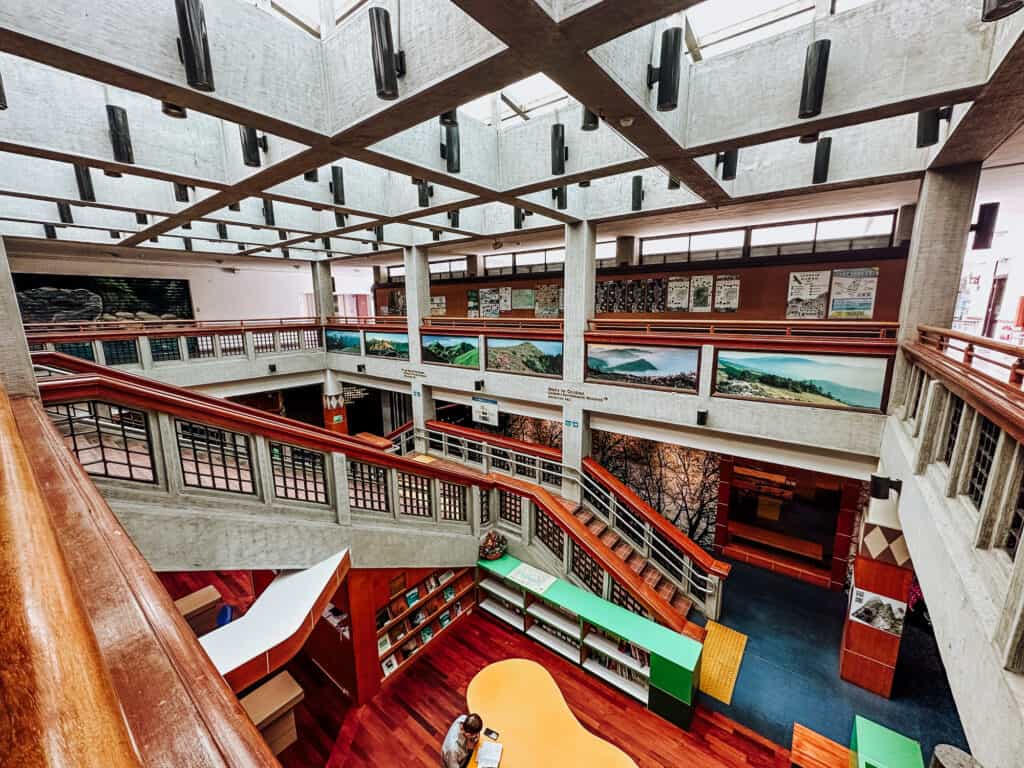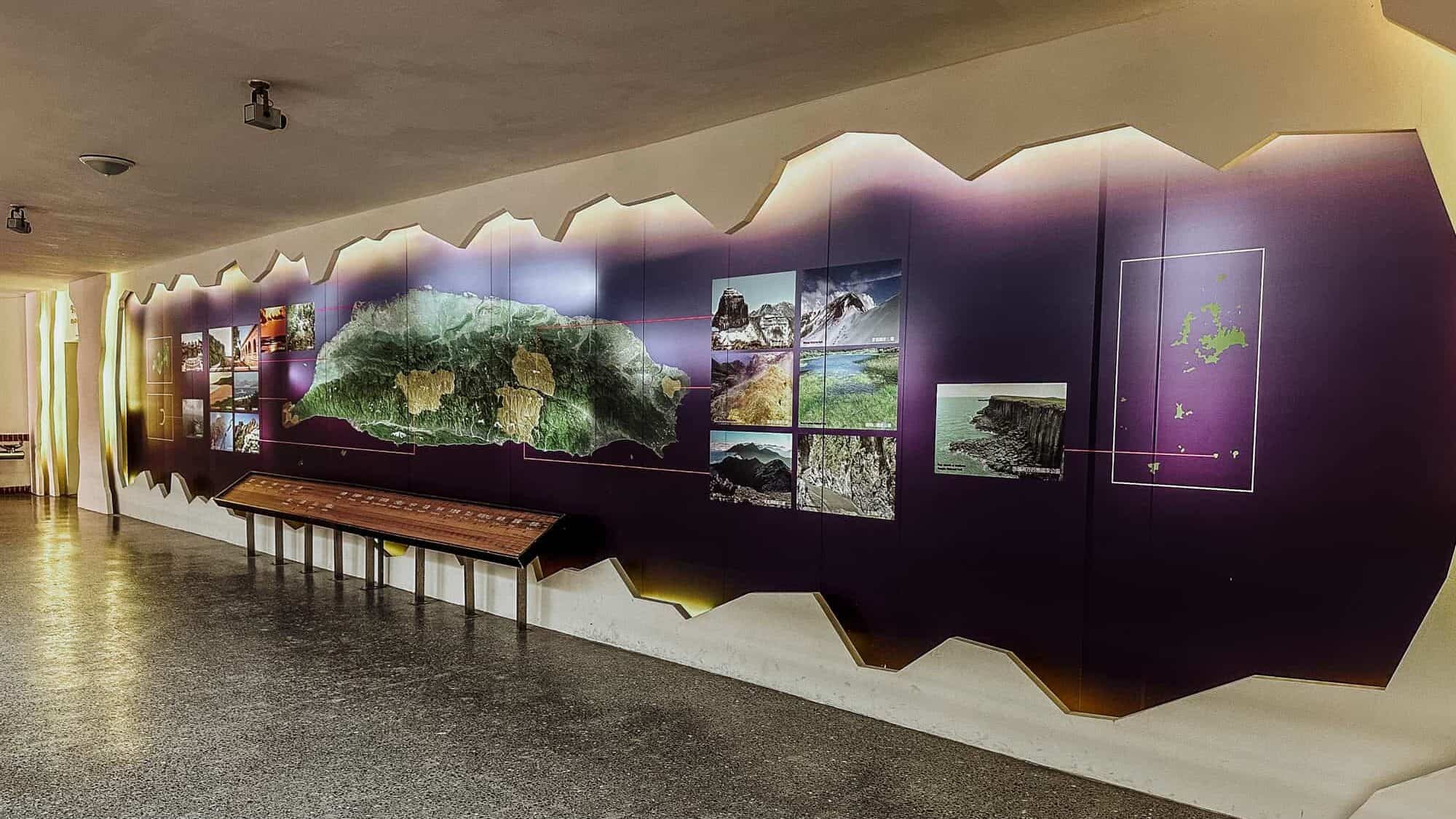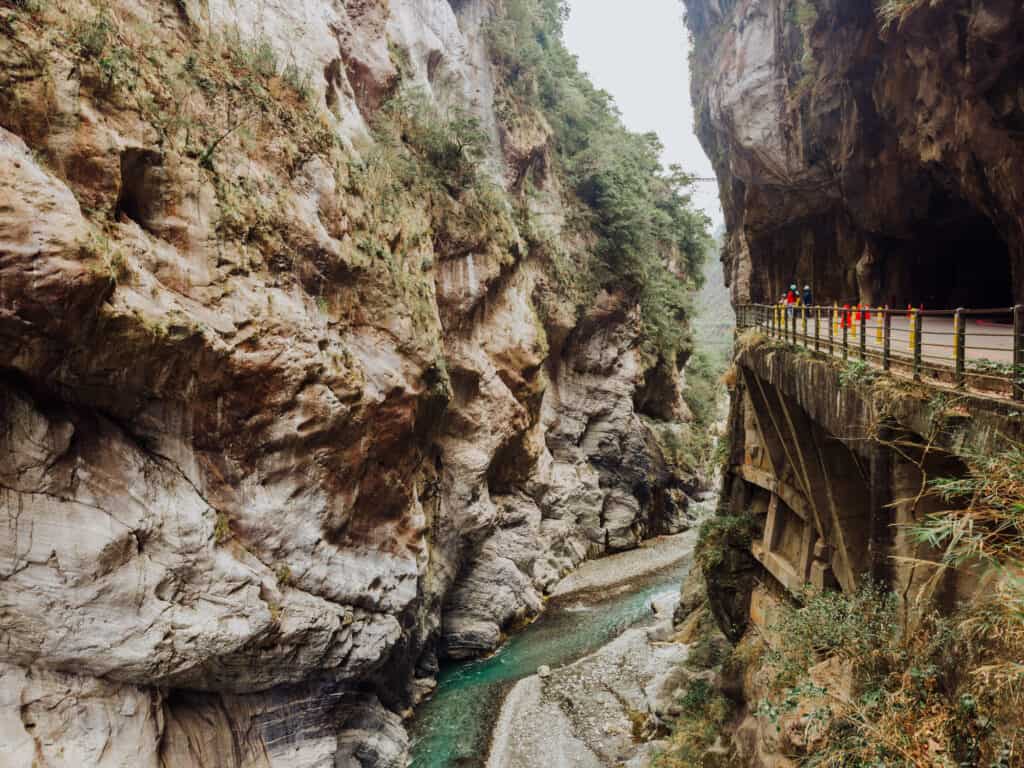Taiwan’s Taroko Gorge National Park: Hiking Trails, Tours & More
TRAVEL GUIDE: TAROKO NATIONAL PARK, TAIWAN
The word “Taroko” is derived from an aboriginal word which means “human.”
The links to tribal culture are abundant in Taroko National Park. Along your drive, on the hiking trails, and at the restaurants, you’ll find members of the tribe still living and working in what is now a national park.
Taroko National Park and its famous gorge are beautiful and scenic. The fresh air is a wonderful change of pace from Taipei.
KEY TAKEAWAYS
American tourists, who are used to hiking trails in places like Yosemite, Glacier, and Yellowstone National Parks might be a bit surprised and even disappointed by Taroko’s hiking trail rules.
In American national parks, you can hike dirt trails through the wilderness and swim in the waterfalls and rivers. Meanwhile, Taroko Gorge is off-limits. The trails are mostly paved walkways high above the rivers.
Wilderness backpacking permits are available, but only a few are given out and you’ll have to reserve them far in advance if you want more of an off-trail adventure in Taroko.
Best Taroko National Park Tours
I’m not always a proponent of tours, and like to visit places on my own schedule. With that said, Taroko National Park is a place where I’d definitely recommend hiring a driver and guide.
This is the best option. It includes a hotel pickup in a private car. The driver and guide will bring you to several trailheads and sites in Taroko:
I’ll get into it more later, but it comes down to a lack of parking at the trailheads in the park. A hired driver from one of these tour operators will erase the stress of getting there, and eliminate challenges created by a lack of parking spots in Taroko.
Our guide was great, and did all the driving for us! We napped on the 2.5 hour drive from Taipei, and he dropped us off wherever we wanted to go in the park, and waited around to pick us up. It’s the perfect setup for a spot like Taroko.
Taipei to Taroko National Park
Taroko National Park is about a two-and-a-half-hour drive from Taipei. It includes several tunnels, including a drive through Taiwan’s longest tunnel. It stretches eight miles under a mountain!
Hualien to Taroko National Park
If you’re not taking a tour or hiring a driver, you can get to Taroko National Park by using public transportation. It’s pretty easy, and very cost-effective!
Hualien is a good place to base yourself overnight, and you can check out hotel and rental options on this interactive map:
From Taipei, take the train to Haulien. It’s about a 2.5 hour ride on the Tze-Chiang Limited Express line. It’ll cost you about $15 (USD).
Once in Hualien, you can take a bus up to Taroko, but you’d be limited in what you can explore.
The best advice from Hualien is to hire one of the waiting taxi drivers to take you to the park. It’s another hour drive from Hualien to Taroko.
You can negotiate your price, and hopefully find someone who agrees to just spend the day with you, shuttling you from trailhead to trailhead.
It’s an added expense, but really an efficient way to see most of the sites in Taroko National Park.
The Shakadang Trail
The Shakadang Trail is an easy, well-maintained trail in Taroko National Park. It runs about 1.5 kilometers along the beautifully blue water in the Shakadang River gorge.
The rock walls that line the Shakadang Trail are covered in green ferns and mosses.
Across the river, you’ll see interesting swirling patterns in the rocks, caused by shifting tectonic plates bending and deforming the sedimentary rock. They look like waves and swirls.
Taroko sits over the spot where the Eurasian Plate and the Philippine Plate are pressing against each other.
Shakadang is good for children and seniors, since it’s mostly flat with long stretches that are fully paved.
It’s largely shaded, and you’ll find several seating areas along the way.
I should say: I apologize for not knowing if I should use the term “aboriginal” or “indigenous” to describe the people who live in the park! Our guide used them interchangeably, so if someone reading knows which is more appropriate, please let me know!
A little more than a kilometer into your hike along the Shakadang Trail, you’ll reach a set of stalls setup for vendors. They’re selling traditional foods and crafts, and helping hikers cool off and relax in the shade before they turn back.
History of the Shakadang Trail
The trail was built during Japanese colonial times for crews building the hydroelectric power station.
In the 1940s, they built a dam to divert the river water to use for electricity.
The National Park staff eventually converted the workers’ road into the trail hikers cause today.
The Liwu Power Station is still generating electricity.
Tunnel of Nine Turns
On our visit, the best part of the Tunnel of Nine Turns was the end spot, where the wind comes whipping through the canyon. It was 90 and humid, so the strong breeze really helped cool us off!
The Tunnel of Nine Turns is good for children and seniors, because the entire walk is paved. You’ll have nice views of the river and the gorge, and the rocky overhangs and tunnels will provide much-appreciated shady spots for cooling off.
The walk (it’s really not a hike) is only 700 meters, so it’ll take less than half-an-hour to complete.
The views are very pretty, and you’ll find yourself wanting to go down farther into the gorge below to explore!
This is another challenging spot when it comes to parking. The trailhead area has zero parking, so you have to be dropped off.
There’s no food along this walk, but you will find an interesting bathroom made of rock.
The Tunnel of Nine Turns is also another example of the lack of access tourists have to the natural park itself. You’re walking along a paved road, through manmade tunnels.
The History of the Tunnel of Nine Turns
The tunnels in this part of Taroko National Park weren’t built for tourists. During Japanese colonial times, gold miners and prospectors entered Taroko Gorge through tunnels, which linked together. As crews later built the main cross-island highway, they discovered the maze of tunnels and named them the Tunnel of Nine Turns.
It became a trail in 1996, after a new highway was complete.
Twice in recent history, typhoons caused flooding severe enough for the river to rise up out of the gorge and flood the highway at the Tunnel of Nine Turns.
The Eternal Spring Shrine
The Eternal Spring Shrine was an unexpected stop on our visit to Taroko National Park, and a very moving experience.
It’s a beautiful setting, perched atop a stunning waterfall in the park.
The shrine was built to honor the 225 workers who died building the highway running through the park. Thousands worked daily for nearly four years (1956-1960) to blast away at the rock for the new road.
The Swallow Grotto Trail
The Swallow Grotto is a roadside hike, which is really more of a walk on pavement above the gorge.
It’s good for all ages, and runs just about a kilometer above the river below. Vertical marble canyon walls rise above the bright blue water below.
As you might imagine, the Swallow Grotto is named after the birds, which dart around the sky above the gorge!
Parking is the real challenge here … as in … there is no parking. It’s best to be dropped off by someone, who can wait in a car at the end of the walk for you to finish.
You’re actually walking on what *was the main road through Taroko National Park. After they built a tunnel and a new road, the original turned into a hiking path.
One side note: you’ll hear rocks tumbling off the cliffs during your walk through Swallow Grotto. While tourists are protected from the falling debris, you’re welcome to pickup one of the Taroko helmets before exploring this spot.
Buluowan Terrace Suspension Bridge
The Buluowan Shanue Suspension Bridge crosses the Liwu River in Taroko National Park.
Visitors can cross the gorge, 150+ meters above the river. The suspension bridge stretches 200 meters across. Buluowan is Taroko’s highest and longest suspension bridge.
Buluowan is a great stop for children, seniors, and also people with mobility issues. There are no steps involved, so you’ll have easy access to the bridge for wheelchairs and strollers.
Tourists are asked not to feed the monkeys, which apparently frequent the spot!
From the bridge, you get a good look at Swallow Grotto.
Zhuilu Old Road
We missed out on Taroko’s best hiking trail: Zhuilu. Only around 100 people are permitted on the trail each day, so this one you really have to plan for in advance.
You can check out the permit process on Taroko’s page.
Zhuilu trail will take you high up above the gorge, along the cliffs, for amazing views of the park and its canyons.
How to Get a Permit for Zhuilu Old Road
For foreign visitors wanting to do a day hike (out and back) on the 3.1km Zhuilu Old Road, the application window is confusing. It closes 35 days before your intended hiking date.
The fee is about $7. You can only apply once a year.
This link explains the fees, permit timelines, and application process for the Zhuilu Old Trail in Taroko National Park.
It’s definitely an item remaining on my bucket list!
Xiangde Temple
The Xiangde Temple is located in the Tianxiang Recreation Area of Taroko National Park.
The Buddhist Temple is built up on the hillside, so you’ll have to climb a steep set of steps to go visit. There’s no elevator!
Visiting in February or March, you’ll be surrounded by blooms on the cherry trees planted around the temple.
Qingshui Cliffs
The Qingshui Cliffs are considered part of Taroko National Park, even though they’re outside the park’s boundaries.
The sheer rock cliffs drop into the bright blue waters of the Pacific Ocean on the northeastern shore of Taiwan. They were formed by the collision between the Eurasian and Philippines tectonic plates.
This is another spot that draws a lot of tourists, simply because the view is so majestic. At the same time, I really wanted to hike down to explore the shore… but it wasn’t allowed.
From the wooden viewing platform, you’ll get sweeping views of the ocean, the beach, and the lush green mountains on shore.
Hotels in Taroko National Park
Taroko National Park is home to one hotel: the 5-Star Silks Place.
You can find rooms for around $300 per night, depending on the season.
The Taroko Village Hotel also rents rooms, near the Buluowan Suspension Bridge.
Food & Restaurants in Taroko
Indigenous people who live in and around Taroko National Park staff all of the restaurants, the farmers market on the Shakadang Trail, and the various food stands. Tourism is their main source of income, so they’re very welcoming to visitors.
While there are food stops along a few of the trails, the main restaurants are at the Tianxiang Recreation Area. It’s kind of like a little village within the national park.
Famished from hours of hiking, we ordered an obscene amount of food. The tally for several plates was only $20 (USD). That’s especially remarkable, considering what food prices are in other tourist destinations.
The Tianxiang Restaurant gets some rough reviews online, but we enjoyed it.
The families who run the restaurants live in the buildings behind them! This is a photo of the village, with the restaurants right behind the bridge:
There’s also a 7-11 in Taroko National Park, where you can pickup snacks, waters, and coffee during your visit. It’s kind of odd to see in this setting, but I was happy to find iced coffee inside!
Taroko Gorge FAQ’s
Some general things to keep in mind on a trip to Taroko National Park:
- Bring Dramamine if you’re prone to motion sickness.
- Wear layers, since it’s likely to be cool in the morning but hot by midday.
- While you can buy water in the park, bring plenty of your own.
- Some trails are bound to be closed when you visit, due to rockslides, earthquakes, or storms.
What are the Dangers and Hazards in the Park?
Hikers are urged to watch for falling rocks, especially after a typhoon or strong storm.
Plus, Taiwan is home to several venomous snakes, and hornets have been known to bother tourists in Taroko
What’s the Weather in Taroko National Park?
The main thing to know about visiting Taiwan, whether you’re going to Taroko or not, is to avoid the months of July and August. They’re too hot and humid to be able to enjoy any kind of outdoor activities.
Winter months get chillier, but usually remain in the 50s. Our guide had only seen snow at the very upper elevations of the peaks.
What’s the Best Time to Visit Taroko Gorge?
When it comes to hiking, October through May are considered the best months to hit the trails in Taroko National Park.
Even in the spring, it gets very hot some days, so bring water, SPF, hats, and layers of clothing to peel off as you hike! It was 90 during our hike in March!
Can You Camp in Taroko National Park?
Camping is only permitted in certain parts of Taroko National Park. You’ll first have to secure permits before backpacking into the campsites.
Heliu Campground is a 25-minute drive from the east entrance of the park. It’s across from the Lushui East Trailhead on the map.
You’ll find water, showers, toilets, lighting, and 12 wooden platforms for tents.
The Lushui Campground has water and lights, but no tent platforms or showers. It’s located about a mile from Tianxiang.
How Far is Taroko from Taipei?
Taroko National Park is just under 90 miles, or 140 kilometers, from Taipei.
Under normal traffic conditions, the drive will take between two-and-a-half and three hours to get to the park.
How Much Does it Cost to go to Taroko?
There is no entry fee at Taroko National Park. It’s free!
The permits for camping and back-country hiking come with a nominal fee of about $7 USD.
What’s at the Park Visitor Center?
I was impressed by the extensive visitor center. You’ll find friendly, knowledgeable staff, along with a complete library of information about Taroko National Park.
This is also where you’d come for information about hiking permits.
There are large maps and exhibits to help you better understand the park, the culture of the tribe, and the ecology of the area.
Wrap: Is it Worth a Trip to Taiwan’s Taroko National Park?
Taroko National Park is definitely worth a visit if you’re in Northern Taiwan. It’s a great break from city life in Taipei.
Again, I’d definitely recommend booking a driver to take you through the park:
➡️ Click Here: Taroko National Park Private Driver
The one thing Taroko lacks is: access to nature. I wish the trails weren’t all paved or on roads, and I would’ve loved to jump into the pristine river water.
The policies abide by the mantra of Taroko National Park, which is partly: “Humans are guests of nature, so please respect the natural and cultural resources in the park.”
The interesting people you’ll meet along the way, learning about the history of the park, and the cultural experience overall will more than makeup for missing out on a swim!
Check out our other posts from Taiwan for more travel ideas:
